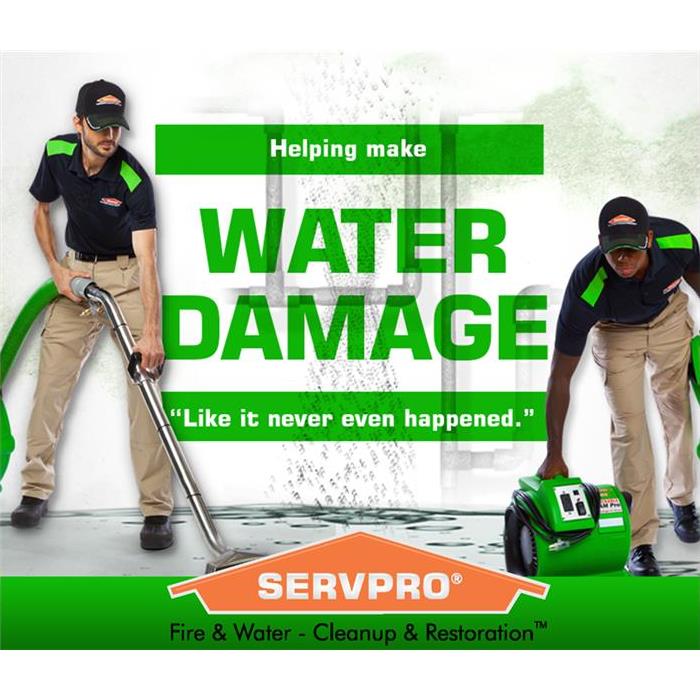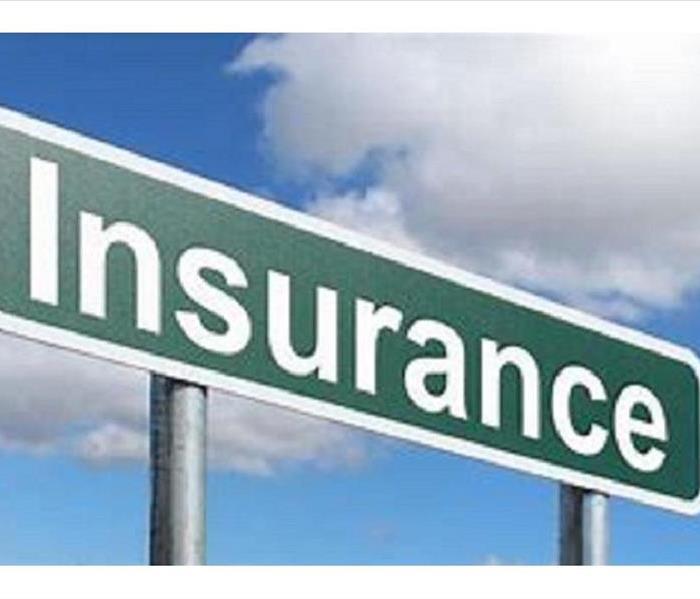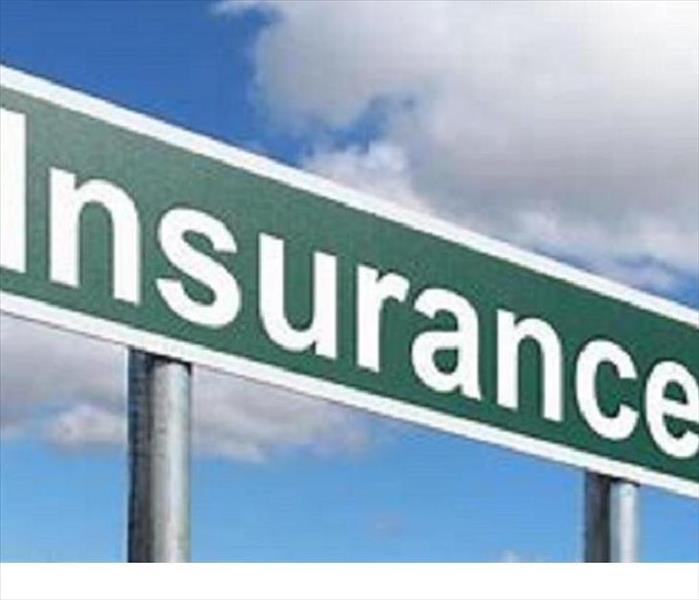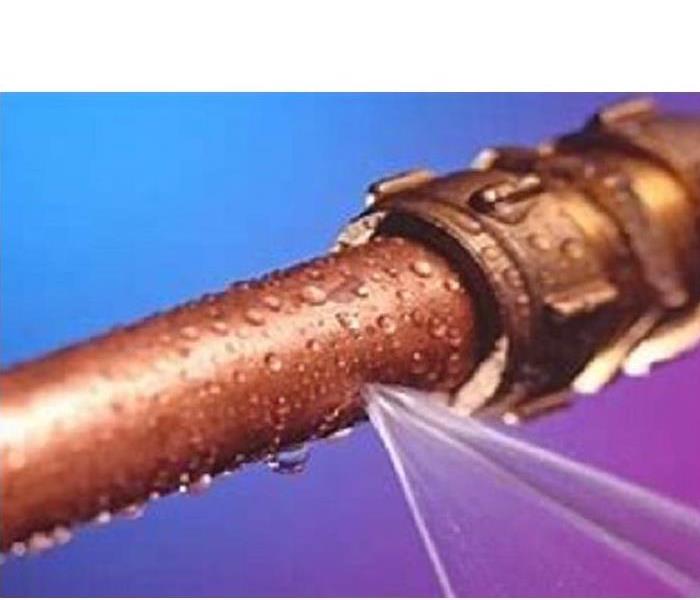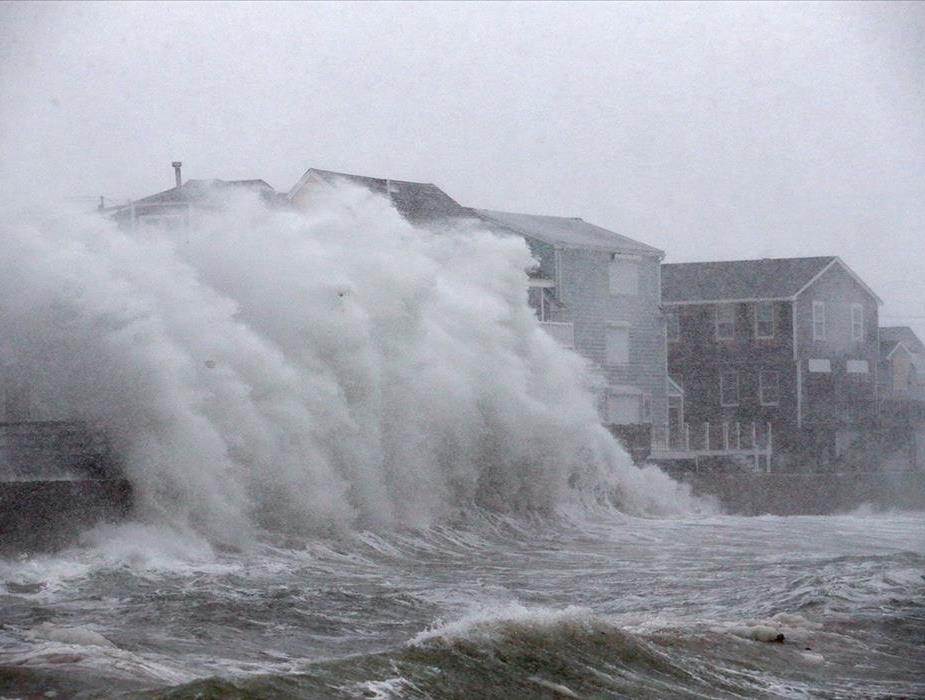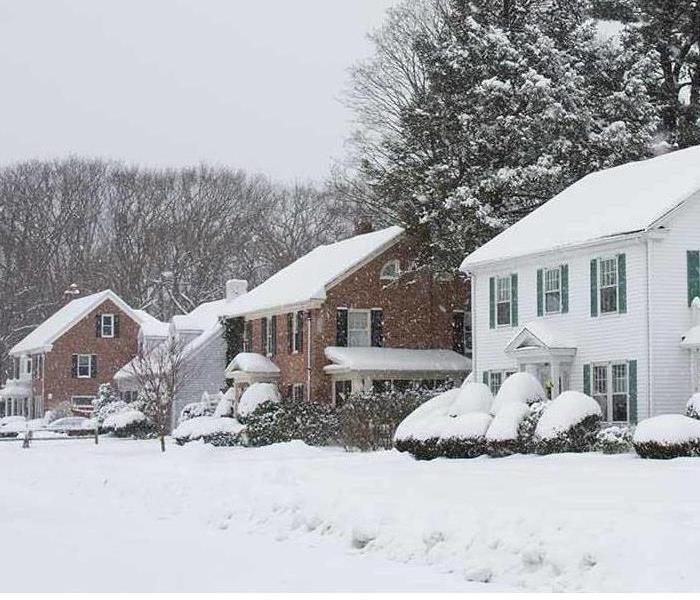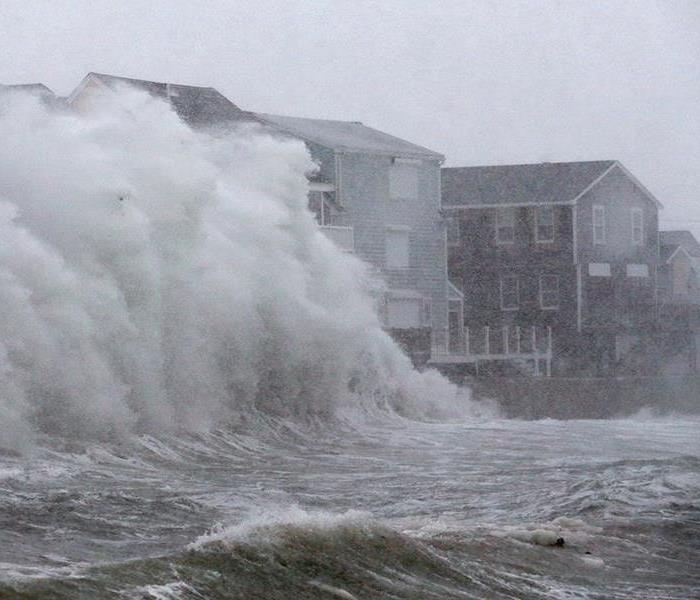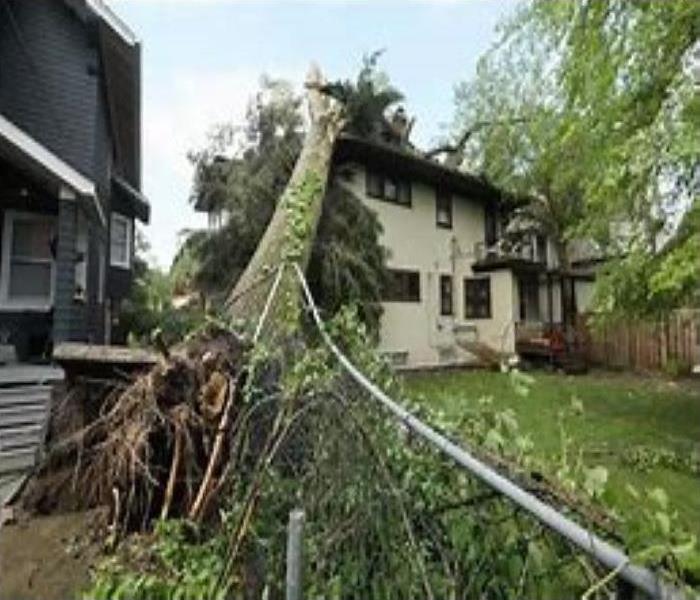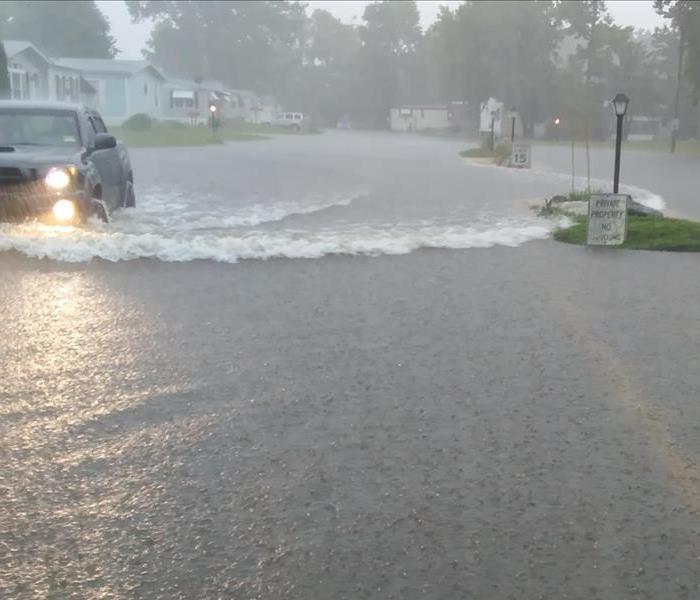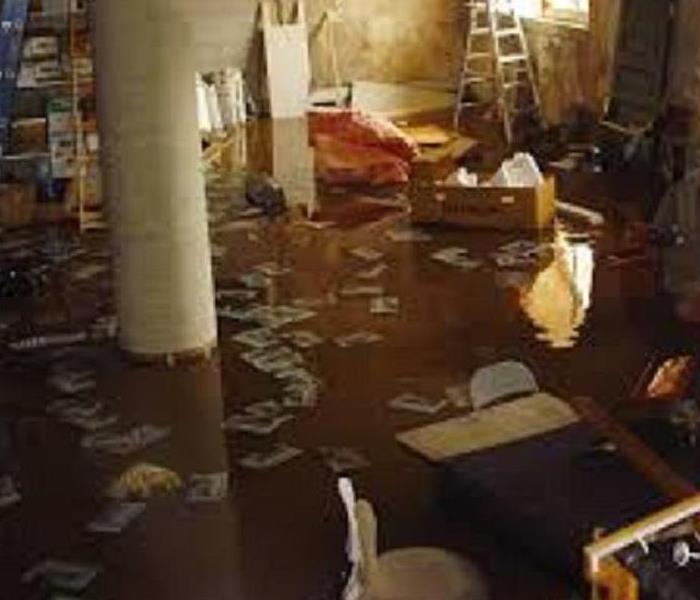Archived Storm Damage Blog Posts
The Importance of Storm Damage Restoration
4/10/2024 (Permalink)
SERVPRO - trained professionals in storm damage restoration
Storms occur with little warning and can be especially devastating, so you’ll need a company that you can trust to rise to the occasion. Regardless of the type of storm, SERVPRO of Milton/Braintree can handle any size disaster. During catastrophic storms and major events
SERVPRO of Milton/Braintree is strategically positioned to be faster to any size emergency.
An immediate response helps to minimize the damage and the cleaning and restoration costs.
Water is particularly invasive, quickly spreading throughout your property and being absorbed into floors, walls, furniture, etc. We arrive quickly and start the water extraction process almost immediately.
Flooding and water emergencies don’t wait for regular business hours, so neither do we. Emergency water restoration services 24 hours a day, 7 days a week—including all holidays. You can expect an immediate response time, day or night
In the event of a storm damage occurrence, please call us fast and we will be there with the help you need
781-341-7007 24/7
What Should I Do After My House Is Damaged by a Storm?
4/13/2023 (Permalink)
What Should I Do After My House Is Damaged by a Storm?
The damage a storm causes to a home can leave your life suddenly upended. In the first days after a storm, you might be overwhelmed with the damage, with everything you have to do and with concerns about getting your life back together. But careful planning can help you return to normalcy as quickly as possible.
Safety First
Whether your house flooded, sustained wind damage or was struck by lightning, the aftermath of a storm can pose serious dangers. Live power lines, mold and open areas of your house can all put you at risk. It's wise to leave your house until you're able to evaluate the damage. Consider going to an emergency shelter, staying with friends and family or staying at a hotel until you're able to get an inspector to your home. Take a few day's worth of clothing and supplies if possible, but prioritize safety above collecting your possessions. Your insurance company might provide someone to inspect your home for safety hazards, or you may need to hire someone, but in either case, you should have your home checked for hazards before you return.
Federal Assistance
The Federal Emergency Management Agency provides a variety of assistance to victims of storm damage. You can get help with temporary housing, with repairs, with meals for your family and with filing insurance claims. Contact the FEMA branch in your area. If the storm damaged many homes in your area, a FEMA representative may be traveling through your neighborhood or available at a local temporary FEMA office. So talk to your local representative for assistance.
Documenting Damage
You'll need to document the damage that has been done by the storm as soon as possible, particularly if your homeowner's insurance only covers certain types of damage. Take photos of the damage, and be sure to document any potential problems, such as mold, crumbling drywall or exposed power lines. It's a good idea to have pictures on file of the normal state of your house. So if you're concerned about a storm that hasn't hit yet, take photos both before and after the storm.
Insurance Claims
Contact your insurance company, which will assign you a claim representative. Work with the representative to have repairs done. The process sometimes takes several months, but most insurance policies will cover the damage after you've paid your deductible. Most homeowner's insurance policies won't cover flood damage, so if your home has flooded, contact your flood insurance company instead. If you don't have flood insurance, you might be stuck paying for the damage yourself. Contact SERVPRO of Milton/Braintree to come in and evaluate your home and begin the post-flood clean-up process.
Frozen Pipes – Tips to Prepare for Winter
1/9/2023 (Permalink)
With temperatures dropping it's important to be prepared. Plumbing breaks and flood damage can be incredibly costly, so preparation is key to keep your pipes from freezing. Follow these easy steps to prevent expensive plumbing repairs.
Water Main:
Locate your house’s water main shut-off valve. In case of a water emergency, you will need to shut off all water flow to the home, and this time-saving knowledge could save you thousands in case of a burst pipe.
Exterior Pipes:
Locate all outdoor spigots and drain. Drain and store all of your hoses. Locate all other exterior pipes and shut down supply lines. Install insulated pipe sleeves on exterior supply lines.
Attic, Basement and Crawl Space Pipes:
Install pipe sleeves on both cold and hot water pipes in attics, basements and crawl spaces.
Cold Air Entry Points:
Seal the outside of your home with caulk or insulation. Check your exterior envelope for air leaks and cracks to help prevent frozen pipes and boost heating efficiency in the winter.
Have water damage from a frozen pipe? Call Us Today at 781-980-7060.
Will Homeowner’s Insurance Cover Winter Storm Damage?
1/9/2023 (Permalink)
All policies vary so please read the specific coverages, terms, provisions, exclusions, and conditions of your policy itself. However, here are some typical coverages of homeowner’s insurance relating to winter storm damage:
Ice Dam Insurance Coverage
Very few insurance policies cover ice dam or snow removal from your roof or anywhere else on your property for that matter. However, interior or exterior damage caused by an ice dam on your roof is typically covered. As with any insurance claim, call the claims department immediately and take photos of the damage.
Frozen Pipes Insurance Coverage
Not all companies pay to have frozen pipes thawed by professionals, though some will. Most policies cover pipe replacement and water damage. The coverage may not apply if you turned the furnace off for the winter without winterizing the house and its contents.
Interruption of Services
If you lose power during a storm, an all-risk homeowner’s policy usually pays for spoiled food, repairs to damage caused by loss of power, and appliances damaged by the outage. Many policies also will pay for shelter when you lose power for extended periods during the winter. If you lose heat and fail to take steps to prevent pipes from freezing, your policy may not cover the resulting damage.
Have water damage from a winter storm? Call Us Today 781-980-7060.
How to Handle Storm Damage Cleanup
4/29/2022 (Permalink)
After a major storm, it is important to act quickly to minimize the impact that it has on your property. Unfortunately, storms can leave you dealing with a variety of types of damage that all must be handled properly to protect your safety and belongings. At first, surveying the damage is overwhelming, but you can be proactive by following these steps for managing your storm cleanup efforts.
Focus On Health and Safety
When dealing with water damage, it is important to first make sure that all power is shut off to the house. This is because storm water may have soaked into your walls and reached the electrical wiring. You may also need to shut off the water supply to your house if you notice broken pipes and avoid using the sewage system if it appears plugged.
Document the Damage
As soon as you can safely approach your property, you will want to take photographs of the damage that you can use as proof for your insurance company. Make sure to take an inventory of both the interior and exterior of the property, and follow your insurance policy to ensure that you consult with the proper professionals for any required inspections.
Repair the Roof
Storms tend to hit the roof of homes and businesses the hardest. Once the roof is lost, water damage quickly adds up. Make sure to have your roof inspected and repaired early on in your clean up efforts so that the rest of the property is protected from future storms.
Get Help With Water Restoration
Cleaning up flooded property requires a professional technique to ensure that every inch is dry. If your property has set for any length of time, it may also be necessary to do mold remediation since it only takes a matter of hours for certain types of mold to grow. While you can do your part to help remove things that are not affected by the storm, it is best to let a professional handle things such as determining whether or not your carpet can be salvaged.
The amount of damage even a short storm can do is shocking. Yet, it is possible to get it all cleaned up and save most of your property. By keeping safety in mind and working with a professional clean-up crew, such as SERVPRO of Milton/Braintree you will have your property looking as good as new soon.
If you're looking for storm restoration services or an odor removal company, then contact the team at SERVPRO of Milton/Braintree today.
Storm Damage Cleanup and Restoration
1/31/2022 (Permalink)
Flooding and water damage from storms like the Nor’easters we experience here in New England can affect not only the structure of your house but also your belongings. SERVPRO of Milton/Braintree has the resources and experience to respond as quickly as possible. We understand that the first 24-hours after a storm that causes widespread flooding and water damager are the most important to prevent secondary or even permanent damage. As members of this community, we are invested in helping to restore the homes and businesses that make this a great place to live. Our team is ready. We are here to help!
We're Faster to Any Size Disaster
Floods and storms don’t wait for normal business hours, and neither do we. You can depend on an immediate response from our highly trained technicians, who are available 24 hours, seven days a week.
We're Highly Trained Storm Damage Specialists
As a leader in storm and water damage restoration, SERVPRO of Milton/Braintree has the specialized training and expertise to restore your home back to its pre-storm condition. Our restoration process puts an emphasis on scientific drying techniques, progress monitoring and documentation.
- Water Damage Restoration Technician
- Applied Structural Drying Technicians
We Have the Resources to Handle Storms and Disasters
In addition to our own resources, we can access equipment and personnel from over 1,700 Franchises across the state and country.
Call Us Today 781-980-7060.
Storm Damage and your Home
1/31/2022 (Permalink)
Storm and water damage affects not only the structure of your house but also your belongings. SERVPRO of Milton/Braintree understands that your home is more than a structure; your family’s furniture, clothing, keepsakes, and other belongings help transform a house into a home.
Contents Restoration
SERVPRO of Milton/Braintree specializes in restoring contents damaged by storms and other water damage events. Our expertise and our “restore” versus “replace” mentality can help you save money while preserving precious keepsakes that can’t be replaced. We pretest your contents to determine what items can be restored back to their condition before the water damage. We utilize several methods of cleaning your contents, including:
- Dry Cleaning - Used for cleaning light residues or to pre-clean prior to cleaning.
- Wet Cleaning - An effective cleaning method for removing moderate to heavy residues.
- Spray and Wipe -Effective for items that can’t withstand cleaning.
- Foam Cleaning - Used for upholstery fabrics that might shrink or bleed if cleaned.
- Abrasive Cleaning - Involves agitation of the surface being cleaned.
- Immersion Cleaning - Contents are dipped into a bath of the cleaning product.
Move-Outs/Pack-Outs
If your home requires extensive restoration or cleaning, SERVPRO of Milton/Braintree can conduct an organized, efficient move-out of the affected area. Move-out will provide several benefits, including:
- A quicker remodeling process
- Protecting items from potential damage
- Protecting contents from further on-site damage
When restoration is completed, they will work with you to coordinate the move-in according to your needs. The services offered upon move-in may depend on your insurance coverage.
Electronic Cleanup
Water-damaged electronics can present a serious hazard. Do not attempt to turn on or operate any electrical device that you suspect has been damaged by water. They will coordinate the restoration of your electronics, including:
- Television sets
- DVD players
- Computers
- And more
The key to restoring electronics is taking prompt action to prevent further damage. They start by cleaning the exterior of electronic devices to help stop further corrosion and damage. Electronics will be cleaned and inspected by a qualified electronics technician.
Document/Photograph Drying
When your valuable documents, including photographs, are damaged by water, extreme caution should be taken to help ensure the water damage does not destroy the document. Although some documents may not be restored to pre-water damage condition, SERVPRO of Milton/Braintree can save a great deal and help minimize additional damage.
Depending on the type of documents and the level of water damage, they have five options for the restoration of documents:
- Air Drying
- Dehumidification
- Freezer Drying
- Vacuum Freeze Drying
- Vacuum Thermal Drying
Contents Claim Inventory Service
When a storm or fire emergency strikes, the damage can often feel overwhelming. SERVPRO Franchise Professionals can help ease the worry and confusion during the recovery process by offering our Contents Claim Inventory Service (CCIS), which provides a detailed and accurate list of your belongings. They take a room-by-room inventory of your contents, including digital photos, and in some instances, bar coding.
Our Contents Claim Inventory Service:
- Pre-loss list and value of contents
- Detailed and accurate report
- Better information to settle claims quicker
- Assistance with burden of proof for claims
- Peace of mind when you need it most!
We are trained professionals in storm restorations
12/22/2021 (Permalink)
Storms occur with little warning and can be especially devastating, so you’ll need the company that you can trust to rise to the occasion. Regardless of the type of storm, SERVPRO of Milton/Braintree can handle any size disaster.
During catastrophic storms and major eventsSERVPRO of Milton/Braintree is strategically positioned to be faster to any size emergency. An immediate response helps to minimize the damage and the cleaning and restoration costs.
Water is particularly invasive, quickly spreading throughout your property and being absorbed into floors, walls, furniture, etc. We arrive quickly and start the water extraction process almost immediately.
Flooding and water emergencies don’t wait for regular business hours and neither do we. Emergency water restoration services 24 hours a day, 7 days a week—including all holidays. You can expect an immediate response time, day or night
In the event of a storm damage occurrence, please call us fast and we will be there with the help you need- 781-980-7060.
Red Cross Storm Tips
12/21/2021 (Permalink)
Winter storms can range from moderate snow to a blizzard with blinding, wind-driven snow that lasts for several days. Some winter storms are large enough to affect several states, while others affect only a single community. Many winter storms are accompanied by extremely low temperatures and very strong winds, ice, sleet and freezing rain.
Regardless of the severity of a winter storm, your home should be prepared to remain safe during these events.
Be in the Know
Winter Storm Outlook - Winter storm conditions are possible in the next 2 to 5 days.
Winter Weather Advisory - Winter weather conditions are expected to cause significant inconveniences and may be hazardous. Use caution.
Winter Storm Watch - Winter storm conditions are possible within the next 36 to 48 hours. People in a watch area should review their winter storm plans and stay informed about weather conditions.
Winter Storm Warning - Life-threatening, severe winter conditions have begun or will begin within 24 hours. People in a warning area should take precautions immediately.
Preparation
How to Prepare for a Winter Storm
- Winterize your vehicle and keep the gas tank full. A full tank will keep the fuel line from freezing.
- Insulate your home by installing storm windows or covering windows with plastic from the inside to keep cold air out.
- Maintain heating equipment and chimneys by having them cleaned and inspected every year.
- If you will be going away during cold weather, leave the heat on in your home, set to a temperature no lower than 55° F.
Put Together a Supply Kit
- Water—at least a 3-day supply; one gallon per person per day
- Food—at least a 3-day supply of non-perishable, easy-to-prepare food
- Flashlight
- Battery powered radio
- Extra batteries
- First Aid Kit
- Medications (at least a 7-day supply) and medical items (hearing aids with extra batteries, glasses, contact lenses, syringes, etc.)
- Multi-purpose tools
- Sanitation and personal hygiene items
- Copies of personal documents (medication list and pertinent medical information, proof of address, deed/lease to home, passports, birth certificates, insurance policies)
- Cell phones with chargers
- Family and emergency contact information
- Cash
- Baby supplies if needed(bottles, formula, baby food, diapers)
- Pet supplies (collar, leash, ID, food, carrier, bowl)
- Tools/supplies for securing your home
- Sand, rock salt or non-clumping kitty litter to make walkways and steps less slippery
- Warm coats, gloves or mittens, hats, boots and extra blankets and warm clothing for all household members
- Ample alternate heating methods such as fireplaces or wood- or coal-burning stoves
Respond During
Remaining Safe During a Winter Storm
- Listen to a NOAA Weather Radio or other local news channels for critical information on snow storms and blizzards from the National Weather Service (NWS).
- Bring pets/companion animals inside during winter weather. Move other animals or livestock to sheltered areas and make sure that their access to food and water is not blocked by snow drifts, ice or other obstacles.
- Running water, even at a trickle, helps prevent pipes from freezing.
- All fuel-burning equipment should be vented to the outside and kept clear.
- Keep garage doors closed if there are water supply lines in the garage.
- Open kitchen and bathroom cabinet doors to allow warmer air to circulate around the plumbing. Be sure to move any harmful cleaners and household chemicals up out of the reach of children.
- Keep the thermostat set to the same temperature both during the day and at night. By temporarily suspending the use of lower nighttime temperatures, you may incur a higher heating bill, but you can prevent a much more costly repair job if pipes freeze and burst.
- Go to a designated public shelter if your home loses power or heat during periods of extreme cold.
- Avoid driving when conditions include sleet, freezing rain or drizzle, snow or dense fog. If travel is necessary, keep a disaster supplies kit in your vehicle.
- Before tackling strenuous tasks in cold temperatures, consider your physical condition, the weather factors and the nature of the task.
- Protect yourself from frostbite and hypothermia by wearing warm, loose-fitting, lightweight clothing in several layers. Stay indoors, if possible.
- Help people who require special assistance such as elderly people living alone, people with disabilities and children.
Caution: Carbon Monoxide Kills
- Never use a generator, grill, camp stove or other gasoline, propane, natural gas or charcoal-burning devices inside a home, garage, basement, crawlspace or any partially enclosed area. Locate unit away from doors, windows and vents that could allow carbon monoxide to come indoors.
- The primary hazards to avoid when using alternate sources for electricity, heating or cooking are carbon monoxide poisoning, electric shock and fire.
- Install carbon monoxide alarms in central locations on every level of your home and outside sleeping areas to provide early warning of accumulating carbon monoxide.
- If the carbon monoxide alarm sounds, move quickly to a fresh air location outdoors or by an open window or door.
- Call for help from the fresh air location and remain there until emergency personnel arrive to assist you.
Cold-Related Emergencies
- Frostbite and hypothermia are two dangerous and potentially life-threatening emergencies. Learn how to care for these emergencies by taking a first aid class.
Be Red Cross Ready
Being prepared may not prevent a disaster but it will give you confidence to meet the challenge.
Will Homeowner’s Insurance Cover Winter Storm Damage?
12/20/2021 (Permalink)
As insurance policies vary, please read your specific coverage, terms, provisions, exclusions, and conditions. Regardless, here are some typical coverages of homeowner’s insurance relating to winter storm damage:
Ice Dam Insurance Coverage
Very few insurance policies cover ice dam or snow removal from your roof or anywhere else on your property for that matter. However, interior or exterior damage caused by an ice dam on your roof is typically covered. As with any insurance claim, call the claims department immediately and take photos of the damage.
Frozen Pipe Insurance Coverage
Not every companies pays to have frozen pipes thawed by professionals. Most policies cover pipe replacement and water damage. The coverage may not apply if you turned the furnace off for the winter without winterizing the house and its contents.
Interruption of Services
If you lose power during a storm, an all-risk homeowner’s policy usually covers spoiled food, repairs to damage caused by loss of power, and appliances damaged by the outage. Additionally, many policies also will pay for shelter when you lose power for extended periods during the winter. If you lose heat and fail to take steps to prevent pipes from freezing, your policy may not cover the resulting damage.
Does your home have water damage from a winter storm? Call Us Today 781-980-7060.
Preparing For A Winter Storm
12/10/2021 (Permalink)
Severe winter storms can have a tremendous impact on individuals, animals, and communities.
Cold temperatures, snow, ice, blizzard conditions with high winds and dangerous wind chills can all occur, leading to personal injury and possibly deaths. High winds combined with cold temperatures speeds the rate of heat loss to the body making serious health problems, such as frostbite or hypothermia more likely. Additional fatalities may occur from vehicle accidents, fires or carbon monoxide poisoning following the misuse of heaters. Dangerous driving conditions can lead to travelers being stranded on the road. Accumulations of snow and ice can result in road closures or blockages – isolating homes and farms for days. The heavy weight burden may cause roofs to collapse or knock down trees and power lines resulting in power outages and subsequent loss of heat in homes. Animals are also at risk during severe winter weather and are subject to wind chill factors, hypothermia and frostbite. Deaths can also occur due to dehydration, when water sources freeze and become unavailable. Winter conditions may make getting food and water to animals more difficult. Unprotected livestock may be lost. Businesses must also make preparations for winter storm situations. Protection of their employees will be necessary to ensure their safety. Employees that must work outdoors during extreme situations should be provided the necessary education on risk and measures to stay safe.
During A Winter Storm:
- Keep as much heat as possible inside your home.
- Check the temperature in your home often during severely cold weather. Avoid unnecessary opening of doors or windows. Close off unneeded rooms. Stuff towels or rags in cracks under doors. Close draperies or cover windows with blankets at night
- Use battery-powered flashlights or lanterns rather than candles, if possible.
- Never leave lit candles unattended.
- Leave all water taps slightly open so they drip continuously.
- If back-up heating sources are needed
- Never place a space heater on top of furniture or near water. Use electric space heaters with automatic shut-off switches and non-glowing elements. Keep heat sources at least 3 feet away from furniture, drapes, or bedding. Never cover a space heater. Never leave children unattended near a space heater.
- Never use a charcoal or gas grill indoors—the fumes are deadly.
- Dangerous carbon monoxide can be generated.
- If backup power supplies are needed
- Never use an electric generator indoors, inside the garage, or near the air intake of your home because of the risk of carbon monoxide poisoning. Do not store gasoline indoors where the fumes could ignite. Use individual heavy-duty, outdoor-rated cords to plug in other appliances.
After A Winter Storm:
- Assess the situation.
- Make sure heating systems are working. Make sure water pipes are working. Look for any damage that may have occurred to your home
- If your pipes do freeze
- Do not thaw them with a torch. Instead, thaw them slowly by directing the warm air from an electric hair dryer onto the pipes
- Carbon monoxide poisoning
- Buildup of this odorless, lethal gas can occur from the use of alternate fuel sources, or gas powered equipment or vehicles. Ensure good ventilation is available before using any of these items.
- If there are no other problems, wait for streets and roads to be plowed before you drive anywhere.
How to Recover After Storm Damage
10/8/2021 (Permalink)
Bad weather can spring up without much of a warning. Most of the time when a bad thunderstorm is threatening your area, you barely have enough time to find shelter. As a homeowner, it is important that you think about these moments before they occur.
Do you have the correct insurance policy? Is your home going to be covered in the event of a disaster? Is the amount of coverage going to be enough to restore your home? Thinking about these questions before the storm damage occurs can make your life after the storm much easier.
Before you do anything else, stop and make sure your home is covered for the following:
- Water and Windstorm Damage
- Debris or Tree Removal
- Sewer Backup Due to Flooding
- Sump Pump Failures Due to Flooding
- Additional Living Expenses In Case A Storm Forces You Out of Your Home
Once you have the proper home insurance coverage for storm damage, you can feel safer during the event of a tragedy. Seeing your home in ruins after a major storm can be heartbreaking. It can be difficult for families to know how to move on from this misfortune. The best thing you can do for your family and your home is to begin storm damage recovery immediately. If you have suffered loss or damage because of bad weather, refer to the following tips on how to recover:
Take Pictures of the Damage
As soon as you are able, you need to start taking pictures of the damage done to your home. The trick to good storm damage recovery is keeping solid records of the damage. This includes any conversations that you have with your insurance agency and with SERVPRO of Milton/Braintree about the damage. You should be able to provide them with pictures and evidence of the destruction.
Photograph any outside damage and property damage that has been done to decks or outdoor buildings. The interior and exterior photos of your damage should be taken from a variety of different angles to capture the severity of the damage.
Report You Claims
It is crucial that you contact your home insurance agency immediately after your home suffers from storm damage. This is one of the biggest steps in storm damage recovery. Your homeowner’s insurance company should be able to provide you with support and structure for moving your restoration process forward.
To start, you should find an exact copy of your homeowner’s insurance and determine if the damage exceeds your deductible. You will then need to work with your insurance company to get the necessary money and repairs completed. They will be able to recommend SERVPRO of Milton/Braintree as a home restoration company approved and in most cases preferred by many insurance companies. From there, you can get a quote from the SERVPRO of Milton/Braintree and report it back to your insurance agency.
SERVPRO of Milton/Braintree works directly with your insurance company to also save you a lot of time and hassle. Being the man in the middle of two companies can be difficult. SERVPRO of Milton/Braintree make it their goal to work directly with your insurance company to improve communication during the project. This will take a lot of stress and pressure off of you during this difficult time.
Make Temporary Repairs
Once all the proper claims have been made and the damage has been reported correctly, you can begin to make some temporary repairs. These repairs do not have to be major reconstructions, and they do not have to last your family forever. You can start by making sure your home is livable again.
If you have suffered roofing damage, place a tarp or plastic material over your roof to keep your home from being damaged further by additional rain. If you have lost a wall or a large portion of your home, work on closing off that section of your house until you can do more permanent constructions.
Allow Your Family to Recover Slowly
Home repairs do not have to be completed all at one time. Storm damage can take several years to fully recover from, and it is important that you give your family the time they need. It might be a while before your home is fully restored to its natural beauty, but it is important that you take your time and get the job done correctly.
Contact SERVPRO of Milton/Braintree at 781-980-7060 or any restoration needs. We are the industry leaders and are the fastest to any disaster of any size.
How to deal with storm damage
4/27/2021 (Permalink)
While many know how to react to severe weather as it occurs, some may not know how to deal with the aftermath of storm clean-up. The following tips include the best actions for homeowners to take in the aftermath of a severe storm that has caused property damage.
Homeowners that were away from their homes during the storm should not reenter their homes until it is confirmed to be safe. A storm damage restoration professional can help you determine if the home is safe. Call a disaster restoration service provider such as SERVPRO Milton/Braintree as well as your insurance company immediately.
At SERVPRO Milton/Braintree we pride ourselves in helping you get back to you home and business as fast as we can, if you find yourself with damage from a storm give us a call at 781-980-7060.
Do you have the right insurance in case of Storm Damage
1/15/2021 (Permalink)
Bad weather can spring up without much of a warning. Most of the time when a flash flood or bad snowstorm is threatening your area, you barely have enough time to find shelter. As a homeowner, it is important that you think about these moments before they occur.
Do you have the correct insurance policy? Is your home going to be covered in the event of a disaster? Is the amount of coverage going to be enough to restore your home? Thinking about these questions before the storm damage occurs can make your life after the storm much easier.
Before you do anything else, stop and make sure your home is covered for the following:
- Water and Windstorm Damage
- Debris or Tree Removal
- Sewer Backup Due to Flooding
- Sump Pump Failures Due to Flooding
- Additional Living Expenses In Case A Storm Forces You Out of Your Home
Once you have the proper home insurance coverage for storm damage, you can feel safer during the event of a tragedy. Seeing your home in ruins after a major storm can be heartbreaking. It can be difficult for families to know how to move on from this misfortune. The best thing you can do for your family and your home is to begin storm damage recovery immediately.
Catastrophic Storm and Major Event Response
SERVPRO of Milton / Braintree can provide help whether you're dealing with a tornado, hurricane, blizzard or flood. Available 24 hours a day and 365 days a year, SERVPRO of Milton Braintree is prepared for the unpredictable.
Call us at 781-341-7007!
Do you have the right insurance in case of Storm Damage
1/15/2021 (Permalink)
Bad weather can spring up without much of a warning. Most of the time when a flash flood or bad snowstorm is threatening your area, you barely have enough time to find shelter. As a homeowner, it is important that you think about these moments before they occur.
Do you have the correct insurance policy? Is your home going to be covered in the event of a disaster? Is the amount of coverage going to be enough to restore your home? Thinking about these questions before the storm damage occurs can make your life after the storm much easier.
Before you do anything else, stop and make sure your home is covered for the following:
- Water and Windstorm Damage
- Debris or Tree Removal
- Sewer Backup Due to Flooding
- Sump Pump Failures Due to Flooding
- Additional Living Expenses In Case A Storm Forces You Out of Your Home
Once you have the proper home insurance coverage for storm damage, you can feel safer during the event of a tragedy. Seeing your home in ruins after a major storm can be heartbreaking. It can be difficult for families to know how to move on from this misfortune. The best thing you can do for your family and your home is to begin storm damage recovery immediately.
Catastrophic Storm and Major Event Response
SERVPRO of Milton / Braintree can provide help whether you're dealing with a tornado, hurricane, blizzard or flood. Available 24 hours a day and 365 days a year, SERVPRO of Milton Braintree is prepared for the unpredictable.
Call us at 781-341-7007!
Protect Pipes from Bursting
1/14/2021 (Permalink)
Why Are Frozen Pipes Dangerous?
Frozen pipes are a problem for a couple of reasons. They can create an inconvenience but, more seriously, can cause major damage to your property.
- Lack of Running Water– The most obvious danger of a frozen pipe is the inability to access running water. This can interfere with your tenant’s ability to do everyday tasks such as washing the dishes or taking a shower. It is a landlord’s responsibility to make sure his or her tenants have running water.
- Potential to Burst- The second problem that can occur when a pipe freezes is that the pipe actually bursts. Once the actual water in the pipe freezes, pressure is created between the closed faucet and the blockage that can build up to a point that causes the pipe to explode. If the pipe bursts outside, this could also create dangerous slippery conditions while the temperatures are below freezing.
Signs of Frozen Pipes
- The Temperature Is Right- Pipes cannot freeze if it is not cold enough outside for them to do so. Water does not freeze when it is 60 degrees Fahrenheit outside, and neither do pipes. When the temperature falls to 32 degrees Fahrenheit or lower, you should begin to take precautions to prevent vulnerable pipes from freezing.
- There Is Frost on the Pipe- For pipes that can actively be seen, such as those under sinks, you may be able to see frost that has accumulated on the exterior of the pipe. This can serve as a warning sign that the pipe is frozen before you ever try to turn on the faucet.
- No Water Is Coming Out of the Faucet- Another sign that you may have a frozen pipe on your hands is lack of running water. If you or a tenant turn on a kitchen or bathroom faucet and only a slight trickle of water or no water at all comes out, the water pipe leading to the faucet may be frozen.
- Strange Smells- A fourth potential sign of a blocked pipe is an odd smell coming from a faucet or drain. If the pipe is partially or completely blocked, the only way the odor can escape is back up in the direction of your property.
How Much Does a Frozen Pipe Cost to Fix?
It is very difficult to estimate the cost of fixing a frozen pipe because each situation is so unique. Two factors that play a huge role in cost are the location of the pipe and whether the pipe has burst.
If you are able to easily access the blockage, such as a pipe under a kitchen sink, you might be able to thaw the blockage for free using a hair dryer or hot rags.
If the blockage is buried in a wall, fixing the issue will become more expensive. You may spend a few hundred dollars cutting open sheetrock to find the problem or more than a thousand if you need to hire a plumber to find and thaw out the blockage.
If a frozen pipe bursts You have a flooding issue on your hands, you could be faced with thousands of dollars of damage. You will have to hire a plumber to fix the burst pipe and then you will have to deal with fixing any damage the water has caused inside your property. If you have the property insurance, they should help cover some of these costs. In cleaning up the mess the water will leave behind you can count on SERVPRO Milton/Braintree. We are water cleanup experts.
We are trained professionals in storm restorations
12/3/2020 (Permalink)
Storms occur with little warning and can be especially devastating, so you’ll need the company that you can trust to rise to the occasion. Regardless of the type of storm, SERVPRO of Milton/Braintree can handle any size disaster. During catastrophic storms and major events
SERVPRO of Milton/Braintree is strategically positioned to be faster to any size emergency.
An immediate response helps to minimize the damage and the cleaning and restoration costs.
Water is particularly invasive, quickly spreading throughout your property and being absorbed into floors, walls, furniture, etc. We arrive quickly and start the water extraction process almost immediately.
Flooding and water emergencies don’t wait for regular business hours and neither do we. Emergency water restoration services 24 hours a day, 7 days a week—including all holidays. You can expect an immediate response time, day or night
In the event of a storm damage occurance, please call us fast and we will be there with the help you need
781-341-7007 24/7
Red Cross Storm Tips
12/3/2020 (Permalink)
Winter Storm
Winter storms can range from a moderate snow over a few hours to a blizzard with blinding, wind-driven snow that lasts for several days. Some winter storms are large enough to affect several states, while others affect only a single community. Many winter storms are accompanied by dangerously low temperatures and sometimes by strong winds, icing, sleet and freezing rain.
Regardless of the severity of a winter storm, you should be prepared in order to remain safe during these events.
Know the Difference
Winter Storm Outlook - Winter storm conditions are possible in the next 2 to 5 days.
Winter Weather Advisory - Winter weather conditions are expected to cause significant inconveniences and may be hazardous. When caution is used, these situations should not be life threatening.
Winter Storm Watch - Winter storm conditions are possible within the next 36 to 48 hours. People in a watch area should review their winter storm plans and stay informed about weather conditions.
Winter Storm Warning - Life-threatening, severe winter conditions have begun or will begin within 24 hours. People in a warning area should take precautions immediately.
Prepare
How to Prepare for a Winter Storm
- Winterize your vehicle and keep the gas tank full. A full tank will keep the fuel line from freezing.
- Insulate your home by installing storm windows or covering windows with plastic from the inside to keep cold air out.
- Maintain heating equipment and chimneys by having them cleaned and inspected every year.
- If you will be going away during cold weather, leave the heat on in your home, set to a temperature no lower than 55° F.
Put Together a Supply Kit
- Water—at least a 3-day supply; one gallon per person per day
- Food—at least a 3-day supply of non-perishable, easy-to-prepare food
- Flashlight [Available on the Red Cross Store]
- Battery-powered or hand-crank radio (NOAA Weather Radio, if possible)[Available on the Red Cross Store]
- Extra batteries
- First aid kit[Available on the Red Cross Store]
- Medications (7-day supply) and medical items (hearing aids with extra batteries, glasses, contact lenses, syringes, etc.)
- Multi-purpose tool
- Sanitation and personal hygiene items
- Copies of personal documents (medication list and pertinent medical information, proof of address, deed/lease to home, passports, birth certificates, insurance policies)
- Cell phone with chargers
- Family and emergency contact information
- Extra cash
- Baby supplies (bottles, formula, baby food, diapers)
- Pet supplies (collar, leash, ID, food, carrier, bowl)
- Tools/supplies for securing your home
- Sand, rock salt or non-clumping kitty litter to make walkways and steps less slippery
- Warm coats, gloves or mittens, hats, boots and extra blankets and warm clothing for all household members
- Ample alternate heating methods such as fireplaces or wood- or coal-burning stoves
Respond During
Remaining Safe During a Winter Storm
- Listen to a NOAA Weather Radio or other local news channels for critical information on snow storms and blizzards from the National Weather Service (NWS).
- Bring pets/companion animals inside during winter weather. Move other animals or livestock to sheltered areas and make sure that their access to food and water is not blocked by snow drifts, ice or other obstacles.
- Running water, even at a trickle, helps prevent pipes from freezing.
- All fuel-burning equipment should be vented to the outside and kept clear.
- Keep garage doors closed if there are water supply lines in the garage.
- Open kitchen and bathroom cabinet doors to allow warmer air to circulate around the plumbing. Be sure to move any harmful cleaners and household chemicals up out of the reach of children.
- Keep the thermostat set to the same temperature both during the day and at night. By temporarily suspending the use of lower nighttime temperatures, you may incur a higher heating bill, but you can prevent a much more costly repair job if pipes freeze and burst.
- Go to a designated public shelter if your home loses power or heat during periods of extreme cold.
- Avoid driving when conditions include sleet, freezing rain or drizzle, snow or dense fog. If travel is necessary, keep a disaster supplies kit in your vehicle.
- Before tackling strenuous tasks in cold temperatures, consider your physical condition, the weather factors and the nature of the task.
- Protect yourself from frostbite and hypothermia by wearing warm, loose-fitting, lightweight clothing in several layers. Stay indoors, if possible.
- Help people who require special assistance such as elderly people living alone, people with disabilities and children.
Caution: Carbon Monoxide Kills
- Never use a generator, grill, camp stove or other gasoline, propane, natural gas or charcoal-burning devices inside a home, garage, basement, crawlspace or any partially enclosed area. Locate unit away from doors, windows and vents that could allow carbon monoxide to come indoors.
- The primary hazards to avoid when using alternate sources for electricity, heating or cooking are carbon monoxide poisoning, electric shock and fire.
- Install carbon monoxide alarms in central locations on every level of your home and outside sleeping areas to provide early warning of accumulating carbon monoxide.
- If the carbon monoxide alarm sounds, move quickly to a fresh air location outdoors or by an open window or door.
- Call for help from the fresh air location and remain there until emergency personnel arrive to assist you.
Cold-Related Emergencies
- Frostbite and hypothermia are two dangerous and potentially life-threatening emergencies. Learn how to care for these emergencies by taking a first aid class.
Be Red Cross Ready
Being prepared may not prevent a disaster but it will give you confidence to meet the challenge.
Storm Damage and your Home
12/3/2020 (Permalink)
Storm and water damage affects not only the structure of your house but also your belongings. SERVPRO Milton/Braintree understand that your home is more than a structure; your family’s furniture, clothing, keepsakes, and other belongings help transform a house into a home.
Contents Restoration
SERVPRO MIlton/Braintree specialize in restoring contents damaged by storms and other water damage events. Our expertise and our “restore” versus “replace” mentality can help you save money while preserving precious keepsakes that can’t be replaced. They pretest your contents to determine what items can be restored back to their condition before the water damage. They utilize several methods of cleaning your contents, including:
- Dry Cleaning - Used for cleaning light residues or to pre-clean prior to cleaning.
- Wet Cleaning - An effective cleaning method for removing moderate to heavy residues.
- Spray and Wipe -Effective for items that can’t withstand cleaning.
- Foam Cleaning - Used for upholstery fabrics that might shrink or bleed if cleaned.
- Abrasive Cleaning - Involves agitation of the surface being cleaned.
- Immersion Cleaning - Contents are dipped into a bath of the cleaning product.
Move-Outs/Pack-Outs
If your home requires extensive restoration or cleaning, SERVPRO Milton/Braintree can conduct an organized, efficient move-out of the affected area. Move-out will provide several benefits, including:
- A quicker remodeling process
- Protecting items from potential damage
- Protecting contents from further on-site damage
When restoration is completed, they will work with you to coordinate the move-in according to your needs. The services offered upon move-in may depend on your insurance coverage.
Electronic Cleanup
Water-damaged electronics can present a serious hazard. Do not attempt to turn on or operate any electrical device that you suspect has been damaged by water. They will coordinate the restoration of your electronics, including:
- Television sets
- DVD players
- Computers
- And more
The key to restoring electronics is taking prompt action to prevent further damage. They start by cleaning the exterior of electronic devices to help stop further corrosion and damage. Electronics will be cleaned and inspected by a qualified electronics technician.
When your valuable documents, including photographs, are damaged by water, extreme caution should be taken to help ensure the water damage does not destroy the document. Although some documents may not be restored to pre-water damage condition, SERVPRO Milton/Braintree can save a great deal and help minimize additional damage.
Depending on the type of documents and the level of water damage, they have five options for the restoration of documents:
- Air Drying
- Dehumidification
- Freezer Drying
- Vacuum Freeze Drying
- Vacuum Thermal Drying
Contents Claim Inventory Service
When a fire emergency strikes, the damage can often feel overwhelming. SERVPRO Franchise Professionals can help ease the worry and confusion during the recovery process by offering our Contents Claim Inventory Service (CCIS), which provides a detailed and accurate list of your belongings. They take a room-by-room inventory of your contents, including digital photos, and in some instances, bar coding.
Our Contents Claim Inventory Service:
- Preloss list and value of contents
- Detailed and accurate report
- Better information to settle claims quicker
- Assistance with burden of proof for claims
- Peace of mind when you need it most!
Recovering after Storm
10/8/2020 (Permalink)
We are trained professionals in storm damage restoration
Storms occur with little warning and can be especially devastating, so you’ll need the company that you can trust to rise to the occasion. Regardless of the type of storm, SERVPRO of Milton/Braintree can handle any size disaster. During catastrophic storms and major events
SERVPRO of Milton/Braintree is strategically positioned to be faster to any size emergency.
An immediate response helps to minimize the damage and the cleaning and restoration costs.
Water is particularly invasive, quickly spreading throughout your property and being absorbed into floors, walls, furniture, etc. We arrive quickly and start the water extraction process almost immediately.
Flooding and water emergencies don’t wait for regular business hours and neither do we. Emergency water restoration services 24 hours a day, 7 days a week—including all holidays. You can expect an immediate response time, day or night
In the event of a storm damage occurrence, please call us fast and we will be there with the help you need
781-341-7007 24/7
How to deal with storm damage
4/10/2020 (Permalink)
While many know how to react to severe weather as it occurs, some may not know how to deal with the aftermath of storm clean-up. The following tips include the best actions for homeowners to take in the aftermath of a severe storm that has caused property damage.
Homeowners that were away from their homes during the storm should not reenter their homes until it is confirmed to be safe. A storm damage restoration professional can help you determine if the home is safe. Call a disaster restoration service provider such as SERVPRO Milton/Braintree as well as your insurance company immediately.
At SERVPRO Milton/Braintree we pride ourselves in helping you get back to you home and business as fast as we can, if you find yourself with damage from a storm give us a call.
Why You Should Always Seek Professional Help After Storm Damage
1/31/2020 (Permalink)
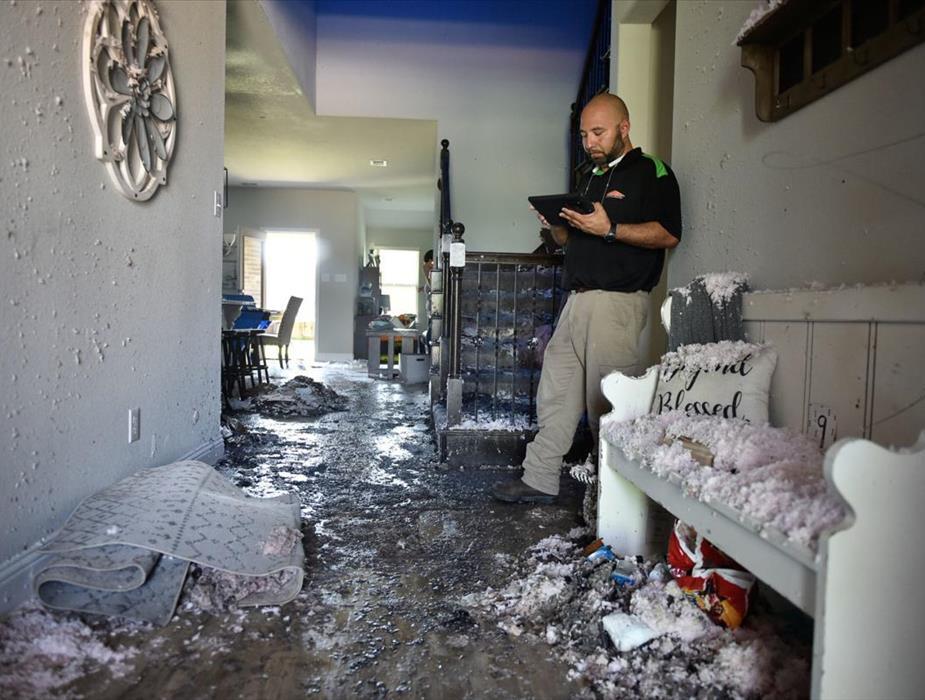 SERVPRO is faster to any disaster in the South Shore and accross the nation
SERVPRO is faster to any disaster in the South Shore and accross the nation
Storm Warning: Why You Should Always Seek Professional Help
It seems that anytime you turn on the news, the word ‘Storm Warning’ pops up. Images of torn down homes, broken trees, floating cars, and extreme amounts of water illuminate the screen. You hear the stories of the survivors and how the storm completely turned their world upside down.
Just recently Hurricane Dorian hit the Bahamas and the southeastern parts of the United States and caused extreme damage and heartache to the residents who live there. Now, although you live in Massachusetts and are safer from the dangers of these hurricanes, these events do make you wonder what you would do if an intense flood came into your town and damaged your home and property. Or even if a mini flood occurred in your basement because of a pipe leak or toilet explosion. How would you feel? Helpless? Unsure where to turn? Well, don’t worry! There are professionals who are trained to take care of such problems. Specialists like the ones at SERVPRO of Milton/Braintree are very skilled in handling any type of water damage. In cases like these, it is important to remember a few things:
- Time is of the essence: Contact SERVPRO of Milton/Braintree immediately if your home suffers water damage. The longer the water sits, the more damage it may cause to your property and belongings.
- Mold: The word alone makes most people cringe. Keep in mind that the water damage may have started a long time before you caught it. If this is the case, there is a pretty good chance that mold has also invaded your space. However, these trained professionals know and understand how to best take care of this issue. These specialists have state of the art equipment and advanced restoration processes to take care of the secondary problem of mold as quickly as possible.
- Temporarily relocate: Now this does not mean that you need to find a new home or pack up any of your things. However, it might be easier if you remove yourself and your family from the scene. Take necessary belongings that you may need for the allotted time that the professionals suggest and get out of there. You have experienced enough stress through this process. Let the professionals take over and solve it for you!
- Keep calm! Remember, these are professionals that know how to take care of your property. They will come in and inspect the type of water damage you have experienced and use the proper equipment to clean it up. Depending on the type of water that invaded your home, it may be contaminated. If this is the case, these specialists already have the correct treatment and equipment to take care of it and keep you and your family safe!
No matter what type of water damage may have occurred in your home or property, do not hesitate to contact professionals like those at SERVPRO of Milton/Braintree at 617-774-8583. They will give you the peace of mind and 100% satisfaction that you need after a stressful event.
-Elias Urizar
617-774-8583
What is a Nor'Easter?
1/23/2020 (Permalink)
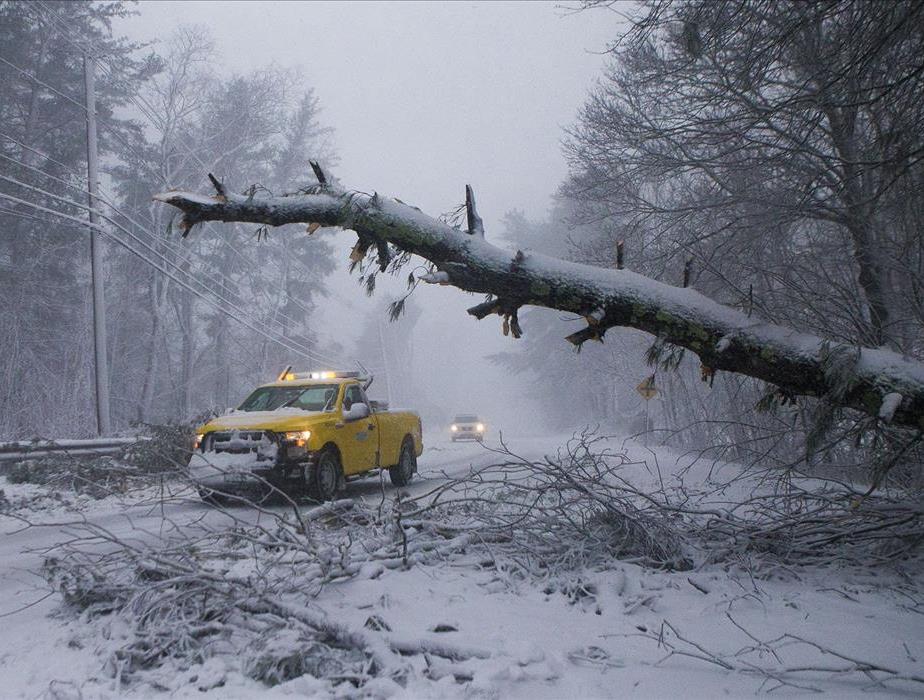 Nor' Easter storm devastating the state of Massachusetts in 2018
Nor' Easter storm devastating the state of Massachusetts in 2018
What is a Nor’Easter?
It’s a word bantered around by meteorologists regularly, one delivered with a strong New England accent in the region: the “nor’easter.” It’s one of weather’s wackiest weather terms, but these storms are no joke. These infamous storms can combine torrential rains, strong storms, and fierce blizzards into one ferocious package that can knock New England out of power for days, sometimes weeks. But what is a nor’easter, and why is it so unique in the North American climate? Let’s take a closer look.
Defining a Nor’Easter
A nor’easter is a massive macro-scale cyclone that forms within 100 miles of the East Coast of the United States, traveling inward into the New England and Mid-Atlantic regions and stretching northward to the Atlantic-facing coast of Canada. They take their name from the robust and relentless northeasterly winds that blow them ashore.
Although nor’easters can occur any time of year, meteorologists typically expect around three each year, most frequently between September and April. In the winter months, a nor’easter can be particularly deadly. The Mid-Atlantic and New England regions are crowded with cities including Boston, New York, Washington, D.C., and Philadelphia—all cities along the heavily populated Interstate 95 Northeast Megalopolis—that have major financial, political, and policy influence over the entire country. In October of 2012, a major nor’easter shuttered Wall Street for only the second time in a century.
How Nor’Easters Form
These storms draw freezing air from the Arctic air mass, which presents a dangerous contrast to the warm air from the oceanic Gulf Stream ocean current coming up from the tropical Atlantic. As this very cold and dry air rushes southward and collides with the warm Gulf Stream current, intense low pressure develops. This low pressure increases the surrounding pressure between the two systems, causing the different air masses to collide at a faster speed. When the difference in temperatures between the two masses is greater, so is the storm’s instability, turbulence, and severity.
Nor’easters are characteristically accompanied by very heavy rain or snow, and can cause severe coastal flooding, erosion, hurricane-force winds, and blizzard conditions. Until the nor’easter passes, thick low-level clouds often blot out the sun. On rare occasions, such as the North American blizzard of 2006, the center of the nor’easter can take on the circular shape of a hurricane or a more traditional cyclone.
However, nor’easters differ from tropical cyclones in that they are cold-core low-pressure systems that thrive on cold air, while tropical cyclones are warm-core low-pressure systems that thrive on warm temperatures.
Tracking the Path of Nor’Easters
There are two primary ways a nor’easter can develop. The first develops along the Gulf Coast or East Coast and tracks northward up the East Coast; meteorologists consider this formation a “classic” nor’easter or “Miller Type-A” storm. In the second scenario, the storm originates in the Midwest and slides east towards the Appalachians. Once it strikes the mountains, the storm loses its low-pressure center, but the low-pressure system redevelops along the East Coast and rides up the coast just as a classic nor’easter would track.
If a nor’easter threatens your community, be sure to take the proper steps to prepare. These steps may include stockpiling at least three days of food, water, and other necessary provisions, as power may be down for days due to strong winds and ice-laden branches knocking down power lines. If roads become snow-covered or flooded, stay off them until they are plowed or flooding subsides. It is best to stay home or shelter in place until the nor’easter passes. Conditions can change quickly during these fast-moving storms and you don’t want to be stranded on an unsafe road, unable to get home.
If you experience any damage from a nor'easter call SERVPRO of Milton/Braintree at 617-774-8583 where we can make it like it never even happened.
Elias Urizar
Business Development
How to Handle Storm Damage Cleanup
12/19/2019 (Permalink)
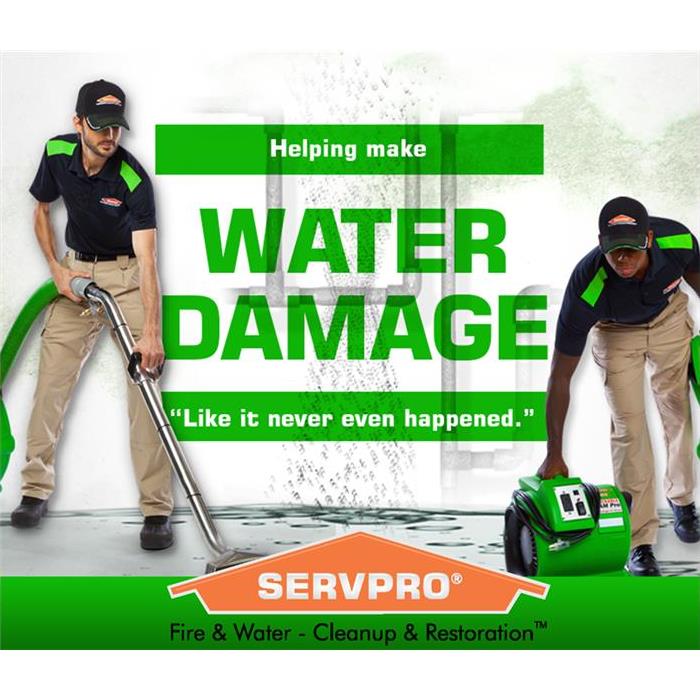 SERVPRO of Milton/Braintree Storm Damage Cleanup Specialists Responding to a Call
SERVPRO of Milton/Braintree Storm Damage Cleanup Specialists Responding to a Call
After a major storm, it is important to act quickly to minimize the impact that it has on your property. Unfortunately, storms can leave you dealing with a variety of types of damage that all must be handled properly to protect your safety and belongings. At first, surveying the damage is overwhelming, but you can be proactive by following these steps for managing your storm cleanup efforts.
Focus On Health and Safety
When dealing with water damage, it is important to first make sure that all power is shut off to the house. This is because storm water may have soaked into your walls and reached the electrical wiring. You may also need to shut off the water supply to your house if you notice broken pipes and avoid using the sewage system if it appears plugged.
Document the Damage
As soon as you can safely approach your property, you will want to take photographs of the damage that you can use as proof for your insurance company. Make sure to take an inventory of both the interior and exterior of the property, and follow your insurance policy to ensure that you consult with the proper professionals for any required inspections.
Repair the Roof
Storms tend to hit the roof of homes and businesses the hardest. Once the roof is lost, water damage quickly adds up. Make sure to have your roof inspected and repaired early on in your clean up efforts so that the rest of the property is protected from future storms.
Get Help With Water Restoration
Cleaning up flooded property requires a professional technique to ensure that every inch is dry. If your property has set for any length of time, it may also be necessary to do mold remediation since it only takes a matter of hours for certain types of mold to grow. While you can do your part to help remove things that are not affected by the storm, it is best to let a professional handle things such as determining whether or not your carpet can be salvaged.
The amount of damage even a short storm can do is shocking. Yet, it is possible to get it all cleaned up and save most of your property. By keeping safety in mind and working with a professional clean-up crew, such as SERVPRO of Milton/Braintree you will have your property looking as good as new soon.
If you're looking for storm restoration services or an odor removal company, then contact the team at SERVPRO of Milton/Braintree today.
What Should I Do After My House Is Damaged by a Storm?
12/3/2019 (Permalink)
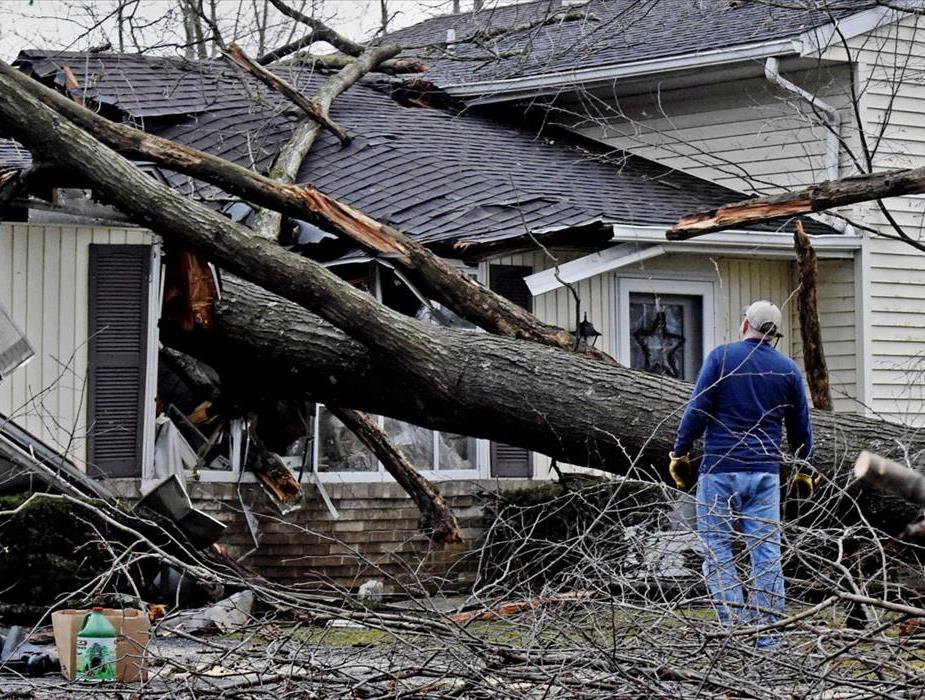 Storm damage can be devastating
Storm damage can be devastating
What Should I Do After My House Is Damaged by a Storm?The damage a storm causes to a home can leave your life suddenly upended. In the first days after a storm, you might be overwhelmed with the damage, with everything you have to do and with concerns about getting your life back together. But careful planning can help you return to normalcy as quickly as possible.
Safety First
Whether your house flooded, sustained wind damage or was struck by lightning, the aftermath of a storm can pose serious dangers. Live power lines, mold and open areas of your house can all put you at risk. It's wise to leave your house until you're able to evaluate the damage. Consider going to an emergency shelter, staying with friends and family or staying at a hotel until you're able to get an inspector to your home. Take a few day's worth of clothing and supplies if possible, but prioritize safety above collecting your possessions. Your insurance company might provide someone to inspect your home for safety hazards, or you may need to hire someone, but in either case, you should have your home checked for hazards before you return.
Federal Assistance
The Federal Emergency Management Agency provides a variety of assistance to victims of storm damage. You can get help with temporary housing, with repairs, with meals for your family and with filing insurance claims. Contact the FEMA branch in your area. If the storm damaged many homes in your area, a FEMA representative may be traveling through your neighborhood or available at a local temporary FEMA office. So talk to your local representative for assistance.
Documenting Damage
You'll need to document the damage that has been done by the storm as soon as possible, particularly if your homeowner's insurance only covers certain types of damage. Take photos of the damage, and be sure to document any potential problems, such as mold, crumbling drywall or exposed power lines. It's a good idea to have pictures on file of the normal state of your house. So if you're concerned about a storm that hasn't hit yet, take photos both before and after the storm.
Insurance Claims
Contact your insurance company, which will assign you a claim representative. Work with the representative to have repairs done. The process sometimes takes several months, but most insurance policies will cover the damage after you've paid your deductible. Most homeowner's insurance policies won't cover flood damage, so if your home has flooded, contact your flood insurance company instead. If you don't have flood insurance, you might be stuck paying for the damage yourself. Contact SERVPRO of Milton/Braintree to come in and evaluate your home and begin the post-flood clean-up process.
5 Steps to Take After Storm Damage
12/3/2019 (Permalink)
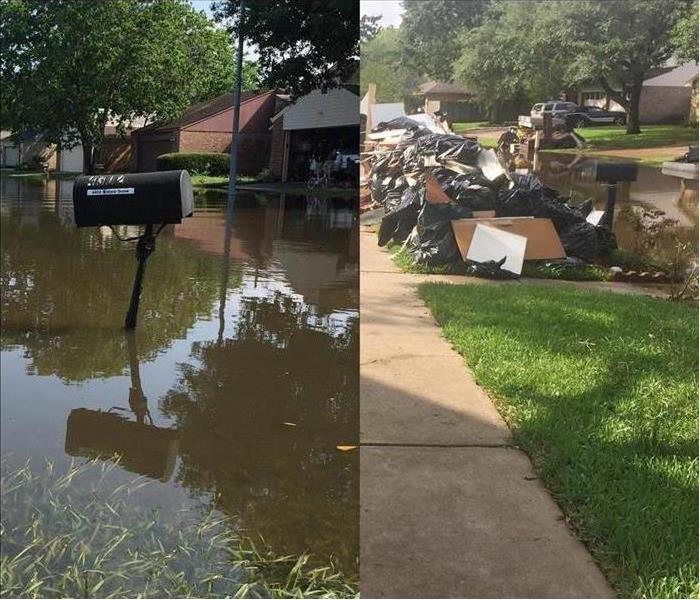 After a storm water damage can be overwhelming
After a storm water damage can be overwhelming
Tips to help you recover after storm damage
A severe storm can change everything in the blink of an eye. It doesn’t always have to be a tornado or hurricane to cause destruction on your home or office, and poor restoration can leave you with an unhealthy home for your family. As challenging as recovery can be, you can take comfort in the fact that many have gone through similar experiences. This makes finding the direction you need a little easier. If you know what to expect and learn all you can before a storm hits, you’ll be more prepared to restore things to normal as quickly as possible.
Stay Safe
Before inspecting the damage to your home keep safety in mind:
- Watch out for hazards such as broken glass and exposed nails.
- Always assume that downed power lines are energized and dangerous. Stay at least 10 feet away and alert the police and utility company.
- When inspecting your home at night, use a flashlight instead of a candle (or anything with an open flame). This will alleviate the risk of a fire or explosion from a damaged gas line.
If you do smell gas—or suspect a leak—shut off the main gas line, open the windows, and immediately go outside. Notify the gas company and the proper authorities of the situation and don’t return until they’ve deemed your home to be safe.
Review and Assess the Damage
Your roof is the most susceptible to costly damage. If a tree limb or other heavy debris fell on your roof during a storm, your home might have structural damage, so be cautious. Common signs of roof damage are:
- Holes in the roof
- Split seams
- Missing shingles
- Bruises or dented asphalt shingles
- Cracked or broken tile, slate, or concrete shingles
- Granules collecting in gutters or downspouts
- Leaks in your roof or ceiling
- Dents on vents, gutters, or flashing
Windows and doors are vulnerable to wind damage and flying debris. Inspect your windows for cracks, holes, broken panes and damaged frames. Watch out for shards of glass, and be sure to board up broken windows until they can be fixed.
Look for damage to siding, paint, bricks and other exterior surfaces of your home. Also check outdoor appliances, like air conditioning units. You’re looking for dings, dents, cracks, splitting, holes, breaks chipping and discoloration.
As safely as you can, secure yourself and remove debris from roof, gutters and make sure downspouts are intact to continue to divert water away from your property.
If there was extended power outages and you have a sump pump, you may have standing water in your basement.
- Do not step in standing water without first making sure power is turned off to avoid risk of electrocution
- Re-engage sump pump to discharge water from the area or call a plumber if the pump is damaged.
Avoid Additional Damage
You may need a board-up service to secure your property so don’t wait. SERVPRO of Milton/Braintree can be there day or night for emergency service.
Contact Your Insurance Provider
Your insurance provider will instruct you on the next steps to take in making a claim and provide you with a claim number and a list of local emergency service providers, like the experts at SERVPRO of Milton/Braintree that will help you restore your home as quickly as possible.
Choose the Right Contractor
It’s important to hire a professional and trustworthy contractor to help you recover your home and restore your lives. Poor or incomplete restoration will leave you with an unhealthy home for your family. Any time there is water damage involved, mold can begin growing immediately as well. It’s critical to address and remedy this as soon as possible to avoid additional damage and health risk. At SERVPRO of Milton/Braintree we have seen it all when it comes to Storm Damage. Whatever your situation is, we will start the process of restoring your lives by giving you a free quote and time estimate on the storm damage repairs required.
How to Recover After Storm Damage
10/30/2019 (Permalink)
 several damage from a storm in different areas of living
several damage from a storm in different areas of living
HOW TO RECOVER AFTER STORM DAMAGE
Bad weather can spring up without much of a warning. Most of the time when a bad thunderstorm is threatening your area, you barely have enough time to find shelter. As a homeowner, it is important that you think about these moments before they occur.
Do you have the correct insurance policy? Is your home going to be covered in the event of a disaster? Is the amount of coverage going to be enough to restore your home? Thinking about these questions before the storm damage occurs can make your life after the storm much easier.
Before you do anything else, stop and make sure your home is covered for the following:
- Water and Windstorm Damage
- Debris or Tree Removal
- Sewer Backup Due to Flooding
- Sump Pump Failures Due to Flooding
- Additional Living Expenses In Case A Storm Forces You Out of Your Home
Once you have the proper home insurance coverage for storm damage, you can feel safer during the event of a tragedy. Seeing your home in ruins after a major storm can be heartbreaking. It can be difficult for families to know how to move on from this misfortune. The best thing you can do for your family and your home is to begin storm damage recovery immediately. If you have suffered loss or damage because of bad weather, refer to the following tips on how to recover:
Take Pictures of the Damage
As soon as you are able, you need to start taking pictures of the damage done to your home. The trick to good storm damage recovery is keeping solid records of the damage. This includes any conversations that you have with your insurance agency and with SERVPRO of Milton/Braintree about the damage. You should be able to provide them with pictures and evidence of the destruction.
Photograph any outside damage and property damage that has been done to decks or outdoor buildings. The interior and exterior photos of your damage should be taken from a variety of different angles to capture the severity of the damage.
Report You Claims
It is crucial that you contact your home insurance agency immediately after your home suffers from storm damage. This is one of the biggest steps in storm damage recovery. Your homeowner’s insurance company should be able to provide you with support and structure for moving your restoration process forward.
To start, you should find an exact copy of your homeowner’s insurance and determine if the damage exceeds your deductible. You will then need to work with your insurance company to get the necessary money and repairs completed. They will be able to recommend SERVPRO of Milton/Braintree as a home restoration company approved and in most cases preferred by many insurance companies. From there, you can get a quote from the SERVPRO of Milton/Braintree and report it back to your insurance agency.
SERVPRO of Milton/Braintree works directly with your insurance company to also save you a lot of time and hassle. Being the man in the middle of two companies can be difficult. SERVPRO of Milton/Braintree make it their goal to work directly with your insurance company to improve communication during the project. This will take a lot of stress and pressure off of you during this difficult time.
Make Temporary Repairs
Once all the proper claims have been made and the damage has been reported correctly, you can begin to make some temporary repairs. These repairs do not have to be major reconstructions, and they do not have to last your family forever. You can start by making sure your home is livable again.
If you have suffered roofing damage, place a tarp or plastic material over your roof to keep your home from being damaged further by additional rain. If you have lost a wall or a large portion of your home, work on closing off that section of your house until you can do more permanent constructions.Allow Your Family to Recover Slowly
Home repairs do not have to be completed all at one time. Storm damage can take several years to fully recover from, and it is important that you give your family the time they need. It might be a while before your home is fully restored to its natural beauty, but it is important that you take your time and get the job done correctly.
Contact SERVPRO of Milton/Braintree at 781-341-7007 for any restoration needs. We are the industry leaders and are the fastest to any disaster of any size.
Water in the Basement in Braintree MA
4/15/2019 (Permalink)
High water tables are a nuisance that many homeowners must face. The water table lies underground and is the level at which the soil and gravel are completely saturated with water. There is often some seasonal change in the water table, due to rain or drought. A high water table is especially common in low-lying areas, or areas where the soil is not well drained.
Causes of High Water Table
Water tables can become elevated when they receive more water than they drain off. This can be from unusually high amounts of rain or excess water from higher elevations.
Basement or Crawlspace Flooding
High water tables are often above the level of basement floors or crawlspaces. This almost always causes flooding in these areas.
Standing Water
Standing water is common with high water tables, especially after rain. The water pools in the yard, which may lead to mosquito infestation.
Septic System Failure
High water tables interfere with septic systems. This can cause premature failure or sewage backup into your home or yard.
If you happen to get water in your basement give SERVPRO Milton/Braintree a call 781-341-7007.
Remembering The April Fool's Day Snow Storm Of 1997
3/18/2019 (Permalink)
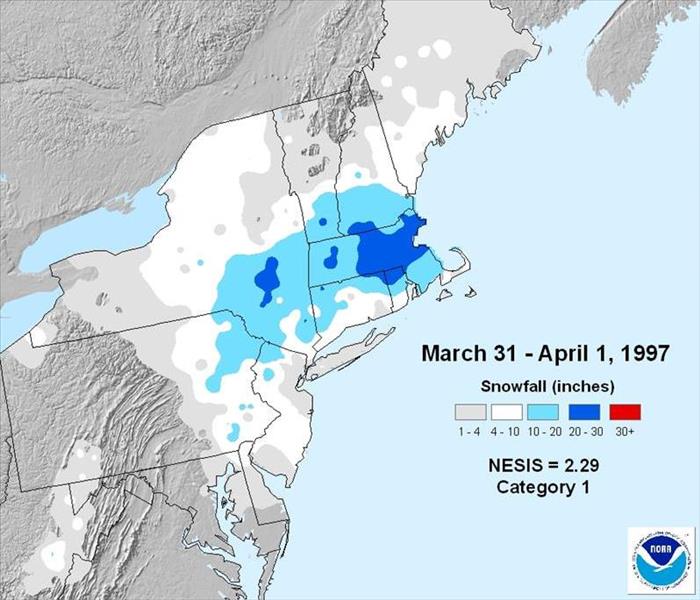 If we get pranked by Mother Nature again on April 1st, call us for any storm damage clean up
781-341-7007
If we get pranked by Mother Nature again on April 1st, call us for any storm damage clean up
781-341-7007
The 1997 April Fool's Day blizzard was a major winter storm in the Northeastern United States on March 31 and April 1, 1997. The storm dumped rain, sleet, and snow from Maryland to Maine leaving hundreds of thousands without power and as much as three feet of snow on the ground.
Due to the date many people took warnings of the storm less than seriously. Plows had already begun to be put away for the summer and hardware stores had to sell shovels again even though they already had out patio furniture. One commuter called it "Mother Nature's April Fools' Joke."
Prior to the storm, Boston had received just 26.5 inches (67 cm) of snow for the season. On Sunday March 30, Boston was sunny with a high temperature of 63 °F. A cold front passed early next day (Monday March 31), dropping the temperature into the 40's, and just prior to dawn precipitation began to fall in the form of light rain. In Boston the rain began to mix with wet snow mid-morning and eventually turned to wet snow and became heavier just after 7 p.m. From 7 p.m. to 11 p.m. the snow fell at a rate of at least 1 inch (2.5 cm) per hour.
During the peak of the storm from about 11 p.m. March 31 to 3 a.m. April 1, snow fell in Boston at the rate of 3 inches (7.6 cm) per hour. Numerous lightning strikes and thunderclaps accompanied the extremely heavy snow, which accumulated one foot (12 inches (30 cm)) in just that four-hour period. Moderate to heavy snow continued through mid-morning before tapering off
A state of emergency was declared by Massachusetts Gov. William F. Weld. The snow came down too fast for road crews to keep up with and roads became impassable and thousands of cars were stranded. Commuter trolleys in Boston were closed for the first time in nearly twenty years, public transportation was crippled, about 1,000 motorists spent the night stranded in their cars and 4,000 stayed in shelters. Some of the narrow side streets of Boston were completely buried and portions of Interstate 95 and Route 128 were shut down because of the snow.The main roads and highways were cleared within a couple of days but the secondary roads remained a mess making travel difficult. Two days after the storm, subways and commuter rails were still sluggish because of fallen trees and signal problems. The wet and heavy snow caused tree limbs and even whole trees to fall. Some fell on power lines, and many people were left without power. Electricity was knocked out for nearly 700,000 people. Nearly 13% of New England lost power, mainly due to trees falling on power lines and utility poles. Power crews from as far away as Canada came to help clean up the area.
Logan Airport was also shut down from 2 p.m. March 31 to 10 p.m. April 1.
Here is to hoping Mother Nature will not play a trick on us in the upcoming weeks and we are ready to spring into Spring!
Common Storm Damage Scenarios
2/25/2019 (Permalink)
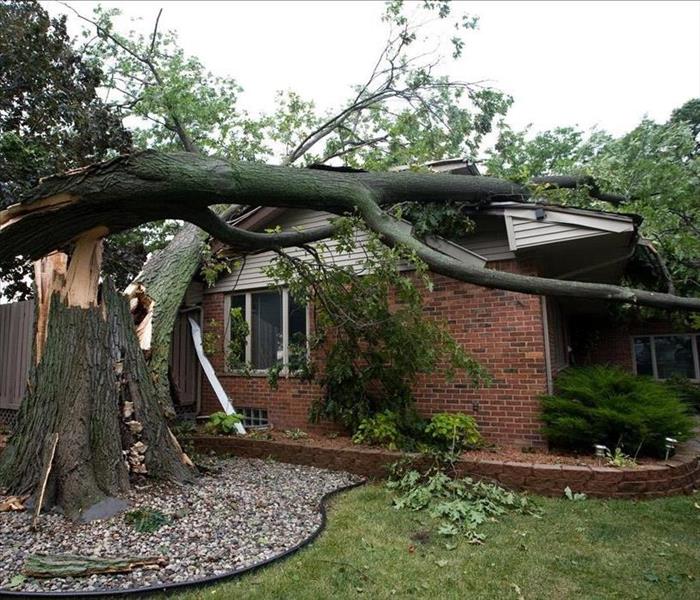 We will work alongside your insurance to get your property back to preloss conditions
781-341-7007
We will work alongside your insurance to get your property back to preloss conditions
781-341-7007
Winter Storm Damage
Winter storms ravage much of the U.S. and Canada every year, and areas that don’t get hit with snow often deal with ice storms and freezing rain. When you’re dealing with blizzards, lake effect storms and snow squalls, damage to your home can include roof and structural damage from heavy snow as well as damage to fascia, exterior pipes and siding. These wintry storms often come with high winds, which can exacerbate damage by causing shingles to break loose. These storms can wreak havoc on utility lines.
Winter storms and freezing weather can also create ice dams, which trap water in between your roof and a layer of ice. These can be easy to miss, but are important to be aware of because they can quickly lead to leaks and then to mold and structural damage.
After a storm, don’t get on the roof or climb into the attic until you’re sure it’s safe. You or your home restoration contractor should check for any signs of leakage in the attic, missing fascia and shingles, bent or detached exhaust pipes, damaged roof vents and damage to the valleys and edges where your roof meets the walls.
When ice storms hit, you may need to be even more cautious. These storms are characterized by leaving at least a quarter of an inch of ice on surfaces. They can cause roofs to collapse, trees to break and power lines to snap. Try to stay in your home until the ice storm has passed and plan ahead with emergency food, water, supplies and power sources.
Hail Damage
Hail damage isn’t always visible. When it is, you can look for cracked shingles, dents in shingles in a random pattern, and bent roof vents and pipes. You can also sustain damage to siding. Invisible damage comes into play when substrate materials beneath the shingles are damaged. If you think you have hail damage, we highly recommend getting an expert opinion. This kind of damage can lead to serious roof leaks that can spread and cause structural problems.
Lightning and Thunderstorm Damage
Lightning storms can occur anywhere in the U.S., and they bring the threat of fires and severe structural damage. Even if your lightning rods work properly by channeling the energy to the ground, it’s possible to see damage to electrical wiring, appliances, antennas, satellite dishes, cable or telephone lines, and steel framework. Unless there are signs of fire, be sure to stay indoors until the storm is over because your home will protect you.
Thunderstorms come with risks even if you aren’t hit by lightning. You could see dangerous flash flooding, hail and high winds.
Storm-related Flood Damage and Tidal Surges
Flooding presents a serious risk to your home and your safety. According to the U.S. National Severe Storms Laboratory, floods kills more people every year than lightning, hurricanes and tornadoes combined.
When it comes to structures, flooding can lead to dangerous contamination and damage to drywall, support beams and foundations. You are at risk for mold within the first 24 hours of a flood, so it’s vital to stop the water from flowing and start remediation quickly.
Different types of floods come with different risks. River floods and flash floods are common when snow melts and have been known to completely overwhelm structures. Coastal floods and storm surges are even more dangerous, and usually lead to evacuation warnings. These can destroy homes entirely, so it’s best to listen to weather reports and plan ahead. Debris flows, which are often made up of heavy mud and plant material, can crush houses and sweep them away.
High Winds, Tornadoes and Hurricane Damage
High winds can occur virtually anywhere, and thousands of tornadoes and hurricanes hit the U.S. every year. Severe winds are defined as exceeding 50-60 mph and are categorized as follows:
Straight-line winds: This broad category includes all winds not associated with rotation
Downdrafts: These winds are small columns of air that sink quickly toward the ground
Downbursts: These winds, which can be as bad as tornadoes, are a result of strong downbursts and are usually associated with thunderstorms
Microbursts: These small, highly concentrated downbursts can exceed 168 mph and can be wet or dry.
Gust fronts: These occur when cold air clashes with warm air from a thunderstorm
Derechos: These long-lived, widespread wind storms come with a band of multiple showers or thunderstorms
Haboobs: These are walls of dust pushed along the ground by thunderstorm downdrafts
Bow echoes: These winds are shaped like an archer’s bow and can produce severe straight-line winds and even tornadoes
Tornadoes: These destructive vortexes can exceed 300 mph and travel over dry land
Cyclones and Hurricanes: In the U.S., these tropical storms rotate inward toward areas of low atmospheric pressure and are most common near the Gulf of Mexico and the eastern seaboard.
Damage from wind can be widespread and can affect not only your structure but also surrounding landscaping and asphalt. Be aware of the potential for falling trees and poles and damaged power lines, and take care of these problems right away. After the storm, examine your property for structural damage to the home, including windows, siding and roofs. In the most extreme scenarios, roofs can be blown clean off.
Hire a Professional Contractor
It’s vital to repair storm damage quickly, but the risk of danger is high. Before you try making repairs yourself, work with your home insurer and hire us, SERVPRO of Milton/Braintree.We are a fully licensed and bonded contractor with credentials from the Institute of Inspection Cleaning and Restoration Certification (IICRC). We’re available for emergencies 24/7.
The Deep Freeze Heading Our Way
1/29/2019 (Permalink)
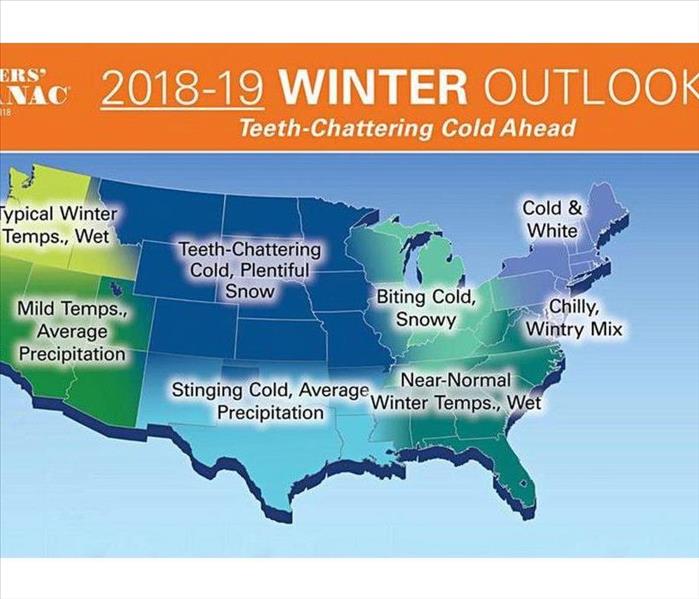 Teeth chattering cold heading our way
Teeth chattering cold heading our way
The race is on to get homes ready for the dangerous freeze, and experts have some advice on what you can do to protect your home from the extreme
The arctic front is expected to be so cold that salt can lose its effectiveness in preventing ice on sidewalks.
Home heating systems can malfunction, and water pipes can burst in the extreme cold, so contractor David Schwager, owner of QBR Services, offered some simple steps to protect your home.
“The first thing you want to do is make sure your windows are closed, secured, and locked. This is going to keep the seal on the window. It’s going to keep your windows efficient as possible. Next thing you want to do, you want to close all your window treatments,” he said. “
Schwager said you also should open all the vents from your furnace, and place towels in front of the spaces on drafty doors.
Most importantly, you should make sure your furnace filter is clean, so it will run as efficiently as possible.
If you have a lot of snow built up outside your windows, you should clean it off to prevent ice damming; when water backs up behind ice and leaks into walls, ceilings, and insulation.
Schwager said you should not only have your thermostat set at a comfortable temperature, but make sure you have extra batteries. If the thermostat goes out, your furnace or boiler won’t run, “and you’re in a world of hurt.”
You should also keep a faucet or two at a slow drip when the temperatures get well below freezing, to keep water moving in your pipes and prevent freezing. Single handle faucets should have a slow drip of warm water, dual handle faucets should have a slow drip of cold water.
If your kitchen or bathroom pipes are on an exterior wall, you should also make sure they’re exposed to warm air. So, if they’re in a cabinet, you can drape a towel over the cabinet door to keep it open a crack so air can get in.
“You want to try to keep all this area as warm as possible. If you do see that they’re actually getting a little bit of frost on them, you can use a hair dryer and actually kind of warm them up a little bit. Get that frost off, and make sure they don’t freeze up,” Schwager said.
Also, make sure you have a clear path to the water meter and shutoff valves, so if you do have a broken pipe, you can turn off the water as quickly as possible to minimize damage from a leak.
We are in for some New England Weather
Be sure to be prepared, and in case of emergency water or storm damage call us fast
Winter Weather Can Lead To Bursting Pipes
1/28/2019 (Permalink)
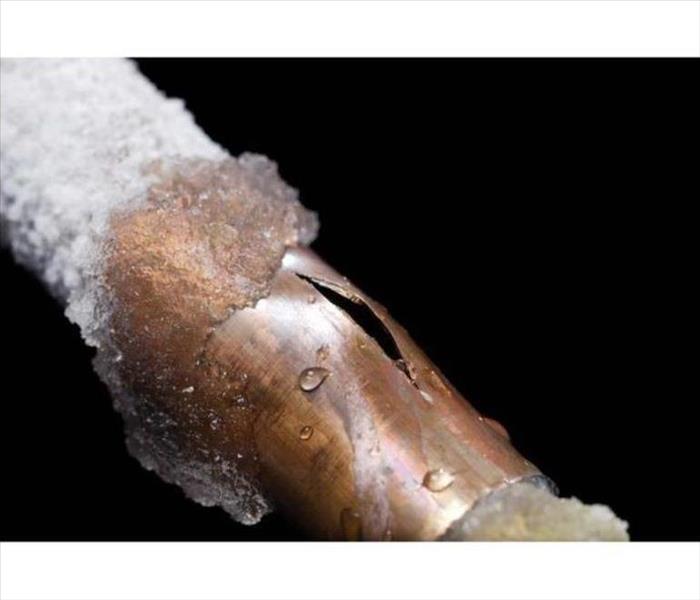 We are your frozen pipe burst emergency cleanup company
781-341-7007
We are your frozen pipe burst emergency cleanup company
781-341-7007
Why Are Frozen Pipes Dangerous?
Frozen pipes are a problem for a couple of reasons. They can create an inconvenience but, more seriously, can cause major damage to your property.
- Lack of Running Water– The most obvious danger of a frozen pipe is the inability to access running water. This can interfere with your tenant’s ability to do everyday tasks such as washing the dishes or taking a shower. It is a landlord’s responsibility to make sure his or her tenants have running water.
- Potential to Burst- The second problem that can occur when a pipe freezes is that the pipe actually bursts. Once the actual water in the pipe freezes, pressure is created between the closed faucet and the blockage that can build up to a point that causes the pipe to explode. If the pipe bursts outside, this could also create dangerous slippery conditions while the temperatures are below freezing.
4 Signs of Frozen Pipes
- The Temperature Is Right- Pipes cannot freeze if it is not cold enough outside for them to do so. Water does not freeze when it is 60 degrees Fahrenheit outside, and neither do pipes. When the temperature falls to 32 degrees Fahrenheit or lower, you should begin to take precautions to prevent vulnerable pipes from freezing.
- There Is Frost on the Pipe- For pipes that can actively be seen, such as those under sinks, you may be able to see frost that has accumulated on the exterior of the pipe. This can serve as a warning sign that the pipe is frozen before you ever try to turn on the faucet.
- No Water Is Coming Out of the Faucet- Another sign that you may have a frozen pipe on your hands is lack of running water. If you or a tenant turn on a kitchen or bathroom faucet and only a slight trickle of water or no water at all comes out, the water pipe leading to the faucet may be frozen.
- Strange Smells- A fourth potential sign of a blocked pipe is an odd smell coming from a faucet or drain. If the pipe is partially or completely blocked, the only way the odor can escape is back up in the direction of your property.
How Much Does a Frozen Pipe Cost to Fix?
It is very difficult to estimate the cost of fixing a frozen pipe because each situation is so unique. Two factors that play a huge role in cost are the location of the pipe and whether the pipe has burst.
If you are able to easily access the blockage, such as a pipe under a kitchen sink, you might be able to thaw the blockage for free using a hair dryer or hot rags.
If the blockage is buried in a wall, fixing the issue will become more expensive. You may spend a few hundred dollars cutting open sheet rock to find the problem or more than a thousand if you need to hire a plumber to find and thaw out the blockage.
If a frozen pipe bursts
You have a flooding issue on your hands, you could be faced with thousands of dollars of damage. You will have to hire a plumber to fix the burst pipe and then you will have to deal with fixing any damage the water has caused inside your property. If you have the property insurance, they should help cover some of these costs. In cleaning up the mess the water will leave behind you can count on SERVPRO Milton/Braintree. We are water cleanup experts.
Winter Weather Can Lead To Bursting Pipes
1/21/2019 (Permalink)
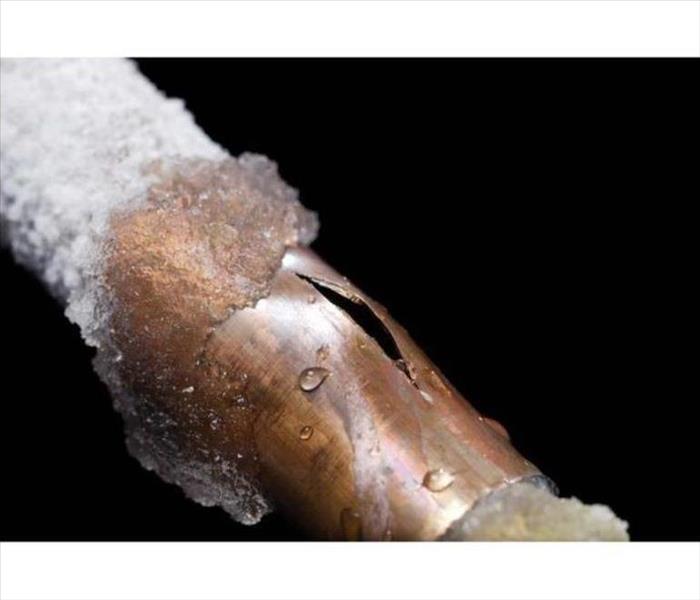 In case of a pipe burst, call us we are available 24/7 for emergency services
781-341-7007
In case of a pipe burst, call us we are available 24/7 for emergency services
781-341-7007
Why Are Frozen Pipes Dangerous?Frozen pipes are a problem for a couple of reasons. They can create an inconvenience but, more seriously, can cause major damage to your property.
- Lack of Running Water– The most obvious danger of a frozen pipe is the inability to access running water. This can interfere with your tenant’s ability to do everyday tasks such as washing the dishes or taking a shower. It is a landlord’s responsibility to make sure his or her tenants have running water.
- Potential to Burst- The second problem that can occur when a pipe freezes is that the pipe actually bursts. Once the actual water in the pipe freezes, pressure is created between the closed faucet and the blockage that can build up to a point that causes the pipe to explode. If the pipe bursts outside, this could also create dangerous slippery conditions while the temperatures are below freezing.
4 Signs of Frozen Pipes- The Temperature Is Right- Pipes cannot freeze if it is not cold enough outside for them to do so. Water does not freeze when it is 60 degrees Fahrenheit outside, and neither do pipes. When the temperature falls to 32 degrees Fahrenheit or lower, you should begin to take precautions to prevent vulnerable pipes from freezing.
- There Is Frost on the Pipe- For pipes that can actively be seen, such as those under sinks, you may be able to see frost that has accumulated on the exterior of the pipe. This can serve as a warning sign that the pipe is frozen before you ever try to turn on the faucet.
- No Water Is Coming Out of the Faucet- Another sign that you may have a frozen pipe on your hands is lack of running water. If you or a tenant turn on a kitchen or bathroom faucet and only a slight trickle of water or no water at all comes out, the water pipe leading to the faucet may be frozen.
- Strange Smells- A fourth potential sign of a blocked pipe is an odd smell coming from a faucet or drain. If the pipe is partially or completely blocked, the only way the odor can escape is back up in the direction of your property.
How Much Does a Frozen Pipe Cost to Fix?It is very difficult to estimate the cost of fixing a frozen pipe because each situation is so unique. Two factors that play a huge role in cost are the location of the pipe and whether the pipe has burst.
If you are able to easily access the blockage, such as a pipe under a kitchen sink, you might be able to thaw the blockage for free using a hair dryer or hot rags.
If the blockage is buried in a wall, fixing the issue will become more expensive. You may spend a few hundred dollars cutting open sheetrock to find the problem or more than a thousand if you need to hire a plumber to find and thaw out the blockage.
If a frozen pipe burstsYou have a flooding issue on your hands, you could be faced with thousands of dollars of damage. You will have to hire a plumber to fix the burst pipe and then you will have to deal with fixing any damage the water has caused inside your property. If you have the property insurance, they should help cover some of these costs. In cleaning up the mess the water will leave behind you can count on SERVPRO Milton/Braintree. We are water cleanup experts.
Recovering From A Winter Storm
1/2/2019 (Permalink)
What To Do If Your Property Suffers A Winter Storm Damage
Even if the blizzard was so destructive that damage occurred to your home regardless of all the preventive measures you had taken, there is no room for panic. Just keep your wits about you and make no hasty decisions. Assess the situation carefully and act accordingly to put your property back in shape as soon as possible.
First, ensure the safety of all family members – make sure no one enters a damaged area in a desperate attempt to rescue some of your household items. Remember that no property loss is even remotely comparable to having a loved one injured. Find a shelter where everyone will be safe and warm – it can be an intact room in your home or a neighbor’s, friend’s or relative’s place if the damage was extensive or some danger (such as fire hazard) lurks in your residence.
Contact your insurance agent immediately after the storm is over. Have a representative of the company come over for estimates at the earliest opportunity and ask for required documents. Provide all the relevant information and gather convincing evidence of the ruins caused by the winter storm.
Be sure to get yourself and family members safe and then contact our office. So we can be there fast with the help you need.
Preparing For A Winter Storm
11/26/2018 (Permalink)
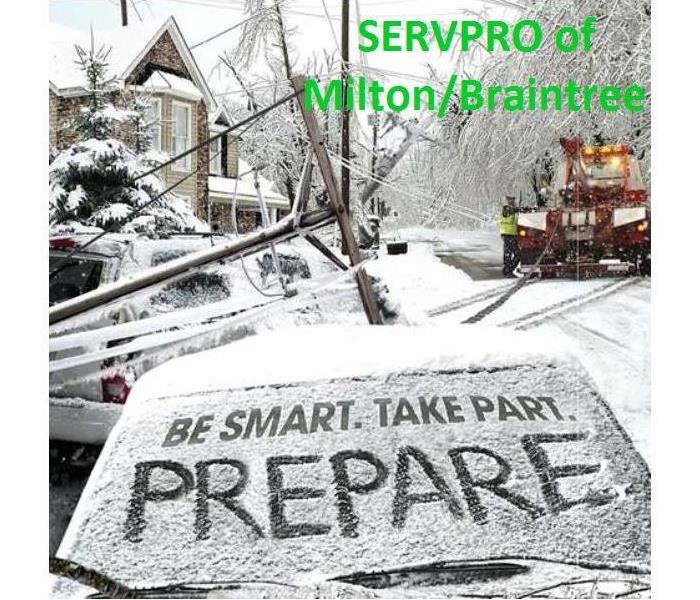 Damage to your home or power outages lasting several days may be possible. Preparing before the storm can help you protect your family and your home.
Damage to your home or power outages lasting several days may be possible. Preparing before the storm can help you protect your family and your home.
Severe winter storms can have a tremendous impact on individuals, animals, and communities.
Cold temperatures, snow, ice, blizzard conditions with high winds and dangerous wind chills can all occur, leading to personal injury and possibly deaths. High winds combined with cold temperatures speeds the rate of heat loss to the body making serious health problems, such as frostbite or hypothermia more likely. Additional fatalities may occur from vehicle accidents, fires or carbon monoxide poisoning following the misuse of heaters. Dangerous driving conditions can lead to travelers being stranded on the road. Accumulations of snow and ice can result in road closures or blockages – isolating homes and farms for days. The heavy weight burden may cause roofs to collapse or knock down trees and power lines resulting in power outages and subsequent loss of heat in homes. Animals are also at risk during severe winter weather and are subject to wind chill factors, hypothermia and frostbite. Deaths can also occur due to dehydration, when water sources freeze and become unavailable. Winter conditions may make getting food and water to animals more difficult. Unprotected livestock may be lost. Businesses must also make preparations for winter storm situations. Protection of their employees will be necessary to ensure their safety. Employees that must work outdoors during extreme situations should be provided the necessary education on risk and measures to stay safe.
During A Winter Storm:
- Keep as much heat as possible inside your home.
- Check the temperature in your home often during severely cold weather. Avoid unnecessary opening of doors or windows. Close off unneeded rooms. Stuff towels or rags in cracks under doors. Close draperies or cover windows with blankets at night
- Use battery-powered flashlights or lanterns rather than candles, if possible.
- Never leave lit candles unattended.
- Leave all water taps slightly open so they drip continuously.
- If back-up heating sources are needed
- Never place a space heater on top of furniture or near water. Use electric space heaters with automatic shut-off switches and non-glowing elements. Keep heat sources at least 3 feet away from furniture, drapes, or bedding. Never cover a space heater. Never leave children unattended near a space heater.
- Never use a charcoal or gas grill indoors—the fumes are deadly.
- Dangerous carbon monoxide can be generated.
- If backup power supplies are needed
- Never use an electric generator indoors, inside the garage, or near the air intake of your home because of the risk of carbon monoxide poisoning. Do not store gasoline indoors where the fumes could ignite. Use individual heavy-duty, outdoor-rated cords to plug in other appliances.
After A Winter Storm:
- Assess the situation.
- Make sure heating systems are working. Make sure water pipes are working. Look for any damage that may have occurred to your home
- If your pipes do freeze
- Do not thaw them with a torch. Instead, thaw them slowly by directing the warm air from an electric hair dryer onto the pipes
- Carbon monoxide poisoning
- Buildup of this odorless, lethal gas can occur from the use of alternate fuel sources, or gas powered equipment or vehicles. Ensure good ventilation is available before using any of these items.
- If there are no other problems, wait for streets and roads to be plowed before you drive anywhere.
When Storms Hit Our Community
10/24/2018 (Permalink)
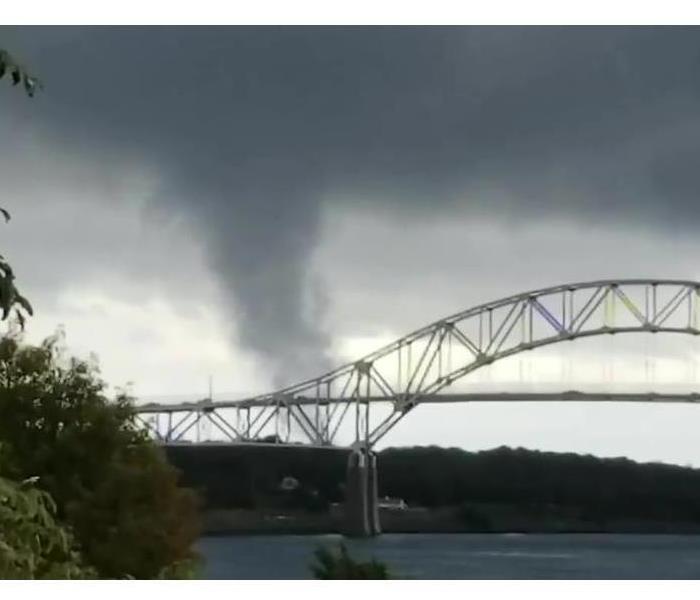 Funnel Cloud Near Bourne Bridge
Funnel Cloud Near Bourne Bridge
Recently our hometown area was experiencing a Tornado in effect, with all of our local communities being affected in the path of destruction. Its not often we hear of a Tornado Warning in our Northeast area but it was quite a scare.
At SERVPRO of Milton/Braintree we are available 24/7 for Emergency Services. When dealing with a storm of any sort we are fully prepared with staffing and equipment to come and help in your disaster situation.
The tornadic waterspouts may often begin as tornadoes over land and then move over water. They also form in severe thunderstorms over a body of water. They can wreak havoc with high winds, hail, and dangerous lightning.
For many people, when a terrible storm hits, it's the aftermath that is the worst. Debris, flood waters, power outages, broken tree limbs, shattered glass, piles of snow— these are all dangerous risks once a hurricane, tornado, or nor'easter makes its way through a town or community.
So in the upcoming months, be sure to have SERVPRO Milton/Braintree in mind when dealing with the aftrermath of strom damages.
Storm Damage Restoration
9/10/2018 (Permalink)
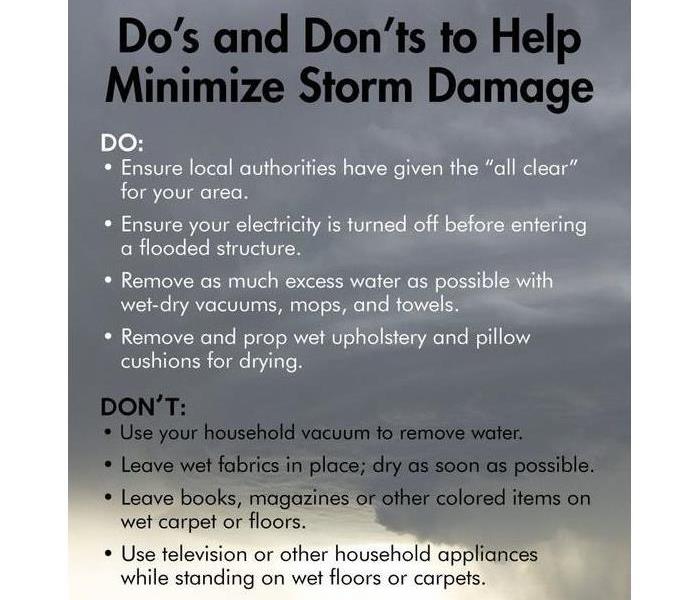 Be ready, have a plan in case of emergency
Be ready, have a plan in case of emergency
We are trained professionals in storm damage restoration
Storms occur with little warning and can be especially devastating, so you’ll need the company that you can trust to rise to the occasion. Regardless of the type of storm, SERVPRO of Milton/Braintree can handle any size disaster. During catastrophic storms and major events
SERVPRO of Milton/Braintree is strategically positioned to be faster to any size emergency.
An immediate response helps to minimize the damage and the cleaning and restoration costs.
Water is particularly invasive, quickly spreading throughout your property and being absorbed into floors, walls, furniture, etc. We arrive quickly and start the water extraction process almost immediately.
Flooding and water emergencies don’t wait for regular business hours and neither do we. Emergency water restoration services 24 hours a day, 7 days a week—including all holidays. You can expect an immediate response time, day or night
In the event of a storm damage occurance, please call us fast and we will be there with the help you need
781-341-7007 24/7
The Differant Types of Storm Damage
7/30/2018 (Permalink)
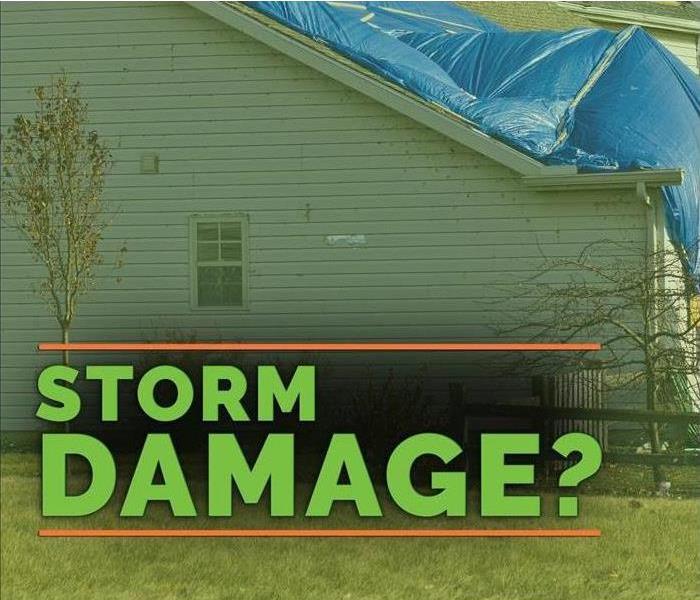 24/7 Emergency Services Available at SERVPRO of Milton/ Braintree 781-341-7007
24/7 Emergency Services Available at SERVPRO of Milton/ Braintree 781-341-7007
Read about the many types damages that can occur from different types of storms
Flooding And Recovery
Flood water frequently poses a risk in coastal areas. Yet heavy rains may cause river flooding miles inland also. If the surrounding terrain cannot absorb ground water, runoff contributes to flood water. Even residents of mountainous areas sometimes sustain varying degrees of flood damage if frozen pipes rupture. Flood pump failures contribute to basement flooding and contaminated ground water in some locations, too.
Flooding may disrupt municipal water systems. Experts need to assess ground water and evaluate the condition of pipes following flood damage. Hiring a storm restoration firm may allow you to begin your cleanup process even before water restoration occurs. (Cleaning before water restoration often proves essential yet challenging.) By relying upon a trained specialist, you'll usually obtain faster storm remediation. These experts may suggest ways to help mitigate flood water damage in the future, for instance, by requesting backup flood pump installation.
Wind Damage Restoration
Hurricane damage sometimes includes severe wind damage. Roof damage in this situation may range from a missing roof, to harsh winds and rains shearing away asphalt tiles. Roof repair of obvious defects usually ensues in the wake of hurricane damage and storm remediation. Correcting roof damage may challenge homeowners after a disaster, since a roof leak may not appear obvious.
How can a roof leak and roof damage escape easy detection in this situation? Wind damage may loosen flashing, eventually causing another roof leak weeks after the storm. Even a subtle roof leak of this nature can produce damp, moldy conditions inside the home. Obtaining fast roof repair may prevent long term interior damage. A wind damage home restoration expert may assist clients in receiving comprehensive roof assessments and roof repair services when hurricane damage afflicts an area. Their expertise helps property owners address storm damage and roof damage more effectively.
When faced with the challenging task of cleanup after any storm damage has occurred, call SERVPRO of Milton/Braintree 24/7 and we will be there with the help you need
Storm Damage and your home
5/15/2018 (Permalink)
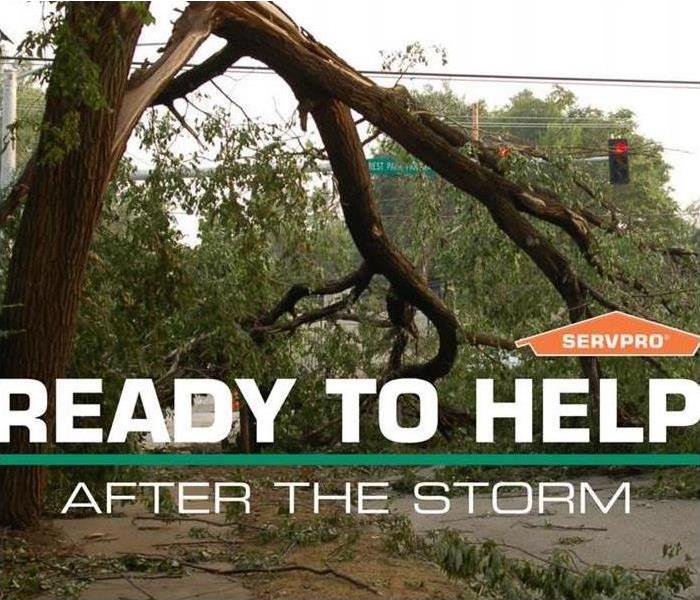 24 Hour Emergency Service in Milton, Braintree, Randolph, Holbrook & Avon Call SERVPRO of Milton / Braintree
781-341-7007
24 Hour Emergency Service in Milton, Braintree, Randolph, Holbrook & Avon Call SERVPRO of Milton / Braintree
781-341-7007
Storm and water damage affects not only the structure of your house but also your belongings. SERVPRO Milton/Braintree understand that your home is more than a structure; your family’s furniture, clothing, keepsakes, and other belongings help transform a house into a home.
Contents Restoration
SERVPRO MIlton/Braintree specialize in restoring contents damaged by storms and other water damage events. Our expertise and our “restore” versus “replace” mentality can help you save money while preserving precious keepsakes that can’t be replaced. They pretest your contents to determine what items can be restored back to their condition before the water damage. They utilize several methods of cleaning your contents, including:
- Dry Cleaning - Used for cleaning light residues or to pre-clean prior to cleaning.
- Wet Cleaning - An effective cleaning method for removing moderate to heavy residues.
- Spray and Wipe -Effective for items that can’t withstand cleaning.
- Foam Cleaning - Used for upholstery fabrics that might shrink or bleed if cleaned.
- Abrasive Cleaning - Involves agitation of the surface being cleaned.
- Immersion Cleaning - Contents are dipped into a bath of the cleaning product.
Move-Outs/Pack-Outs
If your home requires extensive restoration or cleaning, SERVPRO Milton/Braintree can conduct an organized, efficient move-out of the affected area. Move-out will provide several benefits, including:
- A quicker remodeling process
- Protecting items from potential damage
- Protecting contents from further on-site damage
When restoration is completed, they will work with you to coordinate the move-in according to your needs. The services offered upon move-in may depend on your insurance coverage.
Electronic Cleanup
Water-damaged electronics can present a serious hazard. Do not attempt to turn on or operate any electrical device that you suspect has been damaged by water. They will coordinate the restoration of your electronics, including:
- Television sets
- DVD players
- Computers
- And more
The key to restoring electronics is taking prompt action to prevent further damage. They start by cleaning the exterior of electronic devices to help stop further corrosion and damage. Electronics will be cleaned and inspected by a qualified electronics technician.
When your valuable documents, including photographs, are damaged by water, extreme caution should be taken to help ensure the water damage does not destroy the document. Although some documents may not be restored to pre-water damage condition, SERVPRO Milton/Braintree can save a great deal and help minimize additional damage.
Depending on the type of documents and the level of water damage, they have five options for the restoration of documents:
- Air Drying
- Dehumidification
- Freezer Drying
- Vacuum Freeze Drying
- Vacuum Thermal Drying
Contents Claim Inventory Service
When a fire emergency strikes, the damage can often feel overwhelming. SERVPRO Franchise Professionals can help ease the worry and confusion during the recovery process by offering our Contents Claim Inventory Service (CCIS), which provides a detailed and accurate list of your belongings. They take a room-by-room inventory of your contents, including digital photos, and in some instances, bar coding.
Our Contents Claim Inventory Service:
- Preloss list and value of contents
- Detailed and accurate report
- Better information to settle claims quicker
- Assistance with burden of proof for claims
- Peace of mind when you need it most!
Storm and Flood Damage Restoration Professionals
5/7/2018 (Permalink)
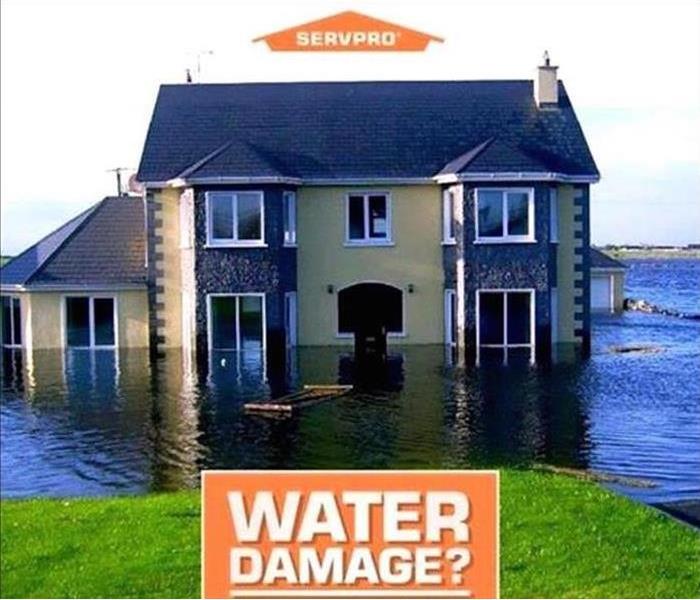 Have Storm or Flood Damage? Call Us Today 781-341-7007
Have Storm or Flood Damage? Call Us Today 781-341-7007
SERVPRO of Milton / Braintree specializes in storm and flood damage restoration. Our crews are highly trained and we use specialized equipment to restore your property to its original pre-storm condition.
Faster Response
Since we are locally owned and operated, we are able to respond quicker with the right resources, which is extremely important. A fast response lessens the damage, limits further damage, and reduces the restoration cost and time required to restore your property.
Resources to Handle Floods and Storms
When storms hit, we can scale our resources to handle a large storm, hurricane or flooding disaster. We can access resources equipment and personnel from a network of 1,700 Franchises across the country and elite Disaster Recovery Teams that are strategically located throughout the United States.
Detecting Water Damage in Your Old House
11/17/2017 (Permalink)
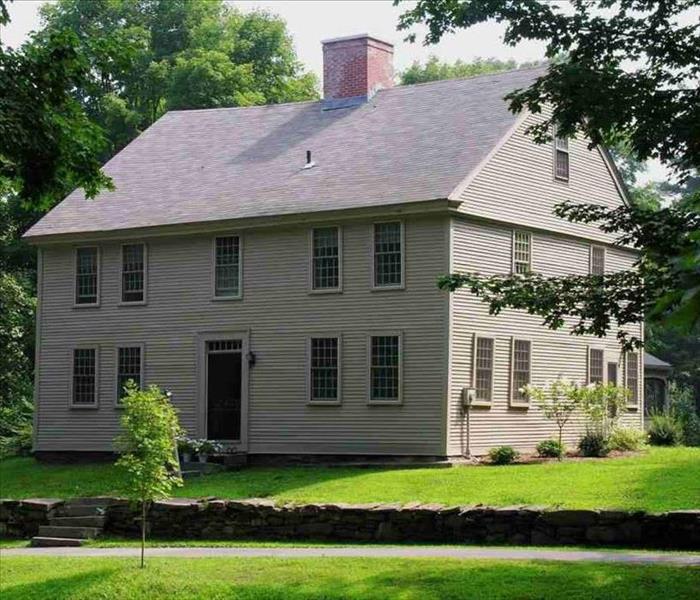 Water damage can inflict severe punishment on a home
Water damage can inflict severe punishment on a home
There is no doubt that many old houses are plagued by problems. One of the biggest issues, whether the house is new or old, is the threat of water damage. It can inflict severe punishment on a home, and unfortunately it doesn't take long -- one serious storm could be enough to result in damage that requires many hours of labor and thousands of dollars to repair.
Spotting water damage
Here is a list of signs that you may have damage, from the clear to the more subtle, sneaky ones:
Water stains. That telltale stain on the ceiling or wall can be an obvious sign. If it suddenly pops up, it's time to get a professional into your house to check it out and find out where the water came from. If you are looking into purchasing an old house and you see water stains, be wary. Ask for proof that the source of the damage has been repaired.
Buckling floors and walls. This is another very clear sign, and it is often the mark of an extensive problem. The drywall or wood absorbs water, which makes it swell. The result is a buckling that you can see or feel when you walk over the area. This can happen over time, such as through a small shower leak, or it can happen all at once, especially after a major storm.
Crumbling areas. Pay attention to the area around the windows. Do you see crumbling wood? The same holds true for baseboards or molding. Any sort of crumbling could indicate the wood is falling apart because of water infiltration.
Trust your nose. The damage might be able to hide from your sight, but you can often find it with your nose. If you walk into a room and are assaulted with the scent of mold or mildew, there could be moisture damage lurking behind the walls. Many old houses have an old, musty smell -- but in rooms where water has caused damage, that smell is often much more pronounced.
Storm or Flood Damage? Call Us Today 781-341-7007
About SERVPRO of Milton / Braintree
SERVPRO of Milton/Braintree specializes in the cleanup and restoration of residential and commercial property after a fire, smoke, or water damage event. Our staff is highly trained in property damage restoration. From initial and ongoing training at SERVPRO’s corporate training facility, to regular IICRC-industry certification, you can rest assured our staff is equipped with the knowledge to restore your property.
Do you have the correct insurance coverage?
10/23/2017 (Permalink)
Bad weather can spring up without much of a warning. Most of the time when a flash flood or bad snowstorm is threatening your area, you barely have enough time to find shelter. As a homeowner, it is important that you think about these moments before they occur.
Do you have the correct insurance policy? Is your home going to be covered in the event of a disaster? Is the amount of coverage going to be enough to restore your home? Thinking about these questions before the storm damage occurs can make your life after the storm much easier.
Before you do anything else, stop and make sure your home is covered for the following:
- Water and Windstorm Damage
- Debris or Tree Removal
- Sewer Backup Due to Flooding
- Sump Pump Failures Due to Flooding
- Additional Living Expenses In Case A Storm Forces You Out of Your Home
Once you have the proper home insurance coverage for storm damage, you can feel safer during the event of a tragedy. Seeing your home in ruins after a major storm can be heartbreaking. It can be difficult for families to know how to move on from this misfortune. The best thing you can do for your family and your home is to begin storm damage recovery immediately.
Catastrophic Storm and Major Event Response
SERVPRO of Milton / Braintree can provide help whether you're dealing with a tornado, hurricane, blizzard or flood. Available 24 hours a day and 365 days a year, SERVPRO of Milton Braintree is prepared for the unpredictable.
Call us at 781-341-7007!
What To Do When Sewer Damage Strikes
9/8/2017 (Permalink)
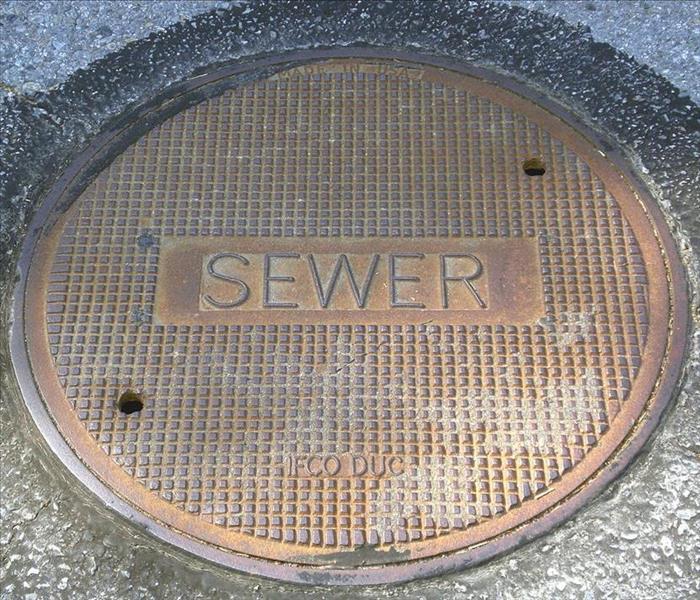 When you are dealing with sewage damage, immediate cleanup is crucial.
When you are dealing with sewage damage, immediate cleanup is crucial.
SERVPRO of Milton/Braintree is available 24 hours a day for sewage removal emergencies, large or small. When you are dealing with sewage damage, immediate cleanup is crucial. A delay of just a few hours can greatly increase the severity of the damage.
Do's
• Treat all water-impacted surfaces and furnishings as toxic, until properly decontaminated.
• Keep children and pets out of contaminated areas.
• Wash your hands thoroughly after contact with contaminated items.
Don't
• Track contaminated material into undamaged areas.
• Turn on the HVAC system if there is a possibility of spreading contaminated air.
• Use household fans to dry the structure and spread contaminants.
• Attempt to decontaminate surfaces with sprays and other over-the-counter germicidal products, which may not fully disinfect contaminated surfaces.
We Answer the Phone Ready to Help! Call Today About Our Sewage Removal Services-781-341-7007
About SERVPRO of Milton / Braintree
SERVPRO of Milton/Braintree specializes in the cleanup and restoration of residential and commercial property after a fire, smoke, sewage (Category 3), or water damage event. Our staff is highly trained in property damage restoration. From initial and ongoing training at SERVPRO’s corporate training facility, to regular IICRC-industry certification, you can rest assured our staff is equipped with the knowledge to restore your property.
Hurricane Damage Cleanup and Restoration Services
7/28/2017 (Permalink)
 Available 24 hours a day and 365 days a year, SERVPRO of Milton Braintree is prepared for the unpredictable.
Available 24 hours a day and 365 days a year, SERVPRO of Milton Braintree is prepared for the unpredictable.
Strong hurricanes can leave a trail of destruction as they move through towns and cities. Strong winds can cause major damage to a home. Debris can break windows and heavy rain can cause indoor water damage. In really bad cases like hurricanes Katrina and Sandy, major flooding can submerge entire cities, causing millions of dollars in destroyed property, not to mention loss of lives.
When a storm-caused flood subsides, you’re usually left with the massive task of getting your life back to where it was prior to the disaster. Most people don't have the tools, knowledge and experience necessary for this kind of effort. For these complex and specialized jobs, SERVPRO of Milton / Braintree is the right company that is ready to help you.
SERVPRO of Milton / Braintree specializes in bringing residential and commercial structures back to normal after they’re affected by both natural and man-made disasters. We have a wealth of experience in applying storm flood damage cleanup and restoration work to a wide variety of building types. If you’ve been hit by a hurricane, or any other level of disaster or damage, we are the right company for you.
Catastrophic Storm and Major Event Response
SERVPRO of Milton / Braintree can provide help whether you're dealing with a tornado, hurricane, blizzard or flood. Available 24 hours a day and 365 days a year, SERVPRO of Milton Braintree is prepared for the unpredictable.
Call us at 781-341-7007
24 Hour Emergency Service in Milton, Braintree, Randolph, Holbrook & Avon Call SERVPRO of Milton / Braintree
5/15/2017 (Permalink)
SERVPRO of Milton / Braintree provides 24-hour emergency service and is dedicated to being faster than anyone to any-sized disaster. We respond immediately to your emergency and have the expertise to handle your restoration or cleaning needs quickly.
- 24-Hour Emergency Service
- Faster to Any-Sized Disaster™
- Highly Trained Restoration Technicians
- A Trusted Leader in the Restoration Industry
- Locally Owned and Operated
- The Most Advanced Restoration and Cleaning Equipment
Have Questions? Call Us Today!
Residential Services
Whether your home needs emergency flood damage or your upholstery cleaned, you can depend on us for the highest quality restoration. Our technicians have extensive cleaning and training and will make your property look its best. Learn more about our residential services:
- Water Damage Restoration
- Fire Damage Restoration
- Mold Remediation
- Storm Damage Restoration
- Cleaning Services
- Building/Reconstruction Services
Commercial Services
There is never a good time for fire or water damage to strike your commercial property. Every hour spent cleaning up is an hour of lost revenue and productivity. When the need arises for professional cleaning or emergency restoration services, we have the training and expertise to respond promptly with highly trained technicians to get your property back to business.
- Commercial Water Damage Restoration
- Commercial Fire Damage Restoration
Milton, Braintree, Avon, Randolph & Holbrook Residents: We Specialize in Drying Flooded Basements:
5/2/2017 (Permalink)
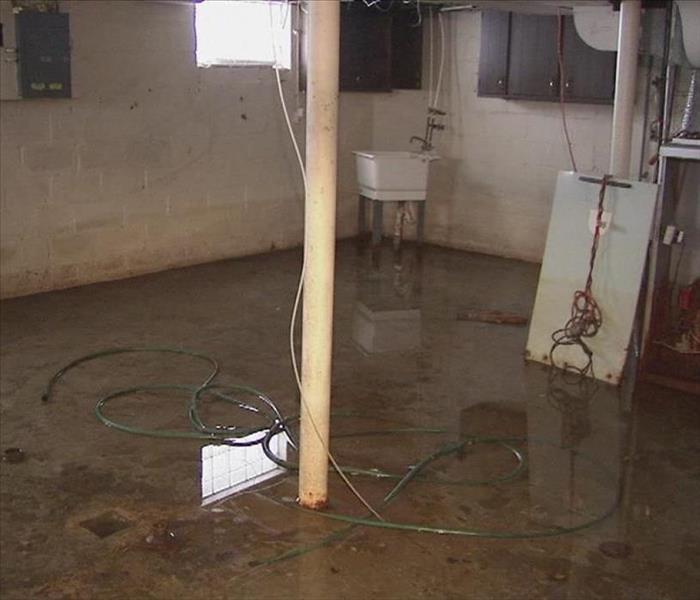 Basement Flooded? Call Us Today – We’re Ready To Help 781-341-7007
Basement Flooded? Call Us Today – We’re Ready To Help 781-341-7007
A basement can flood at any time, although flooding most often occurs during heavy rainfall. Basements are inherently prone to flooding because they are the lowest level of a building and are normally built partly or entirely below ground level. There are a number of reasons why your basement could flood, including:
- A blocked or failed sewer lateral pipe
- Heavy rain causes surface water to pool around your home
- Storm sewer backup
- Sanitary sewer backup
- Foundation drainage failure
- Water supply-line break or hot-water tank failure
- And many more
Have Questions about Basement Flooding?
Call Today - 781-341-7007
If flood water is not handled quickly and properly, it can jeopardize your health and safety, and cause severe damage to your home’s structure. Remember, the longer you wait, the worse the problem will get.
The bottom line: a flooded basement can jeopardize your health, safety, and your home’s integrity. It’s worth making a call to SERVPRO of Milton / Braintree and let our trained, professional crews handle the situation safely and correctly. We have earned the trust of hundreds of homeowners, business owners, and property professionals.
We are Flooded Basement Specialists:
- We are Available 24 hours/7 days per week
- We’re a Preferred Vendor to many National Insurance Companies
- We Bill The Insurance Directly – One Less Thing For You To Worry About
- Our Technicians are Highly-Trained in Water Restoration Techniques
- We use s500 IICRC Restoration Standards
- Advanced Inspection and Extraction Equipment
Basement Flooded? Call Us Today – We’re Ready To Help 781-341-7007
SERVPRO of Milton / Braintree specializes in storm and flood damage restoration
4/25/2017 (Permalink)
Our crews are highly trained and we use specialized equipment to restore your property to its original pre-storm condition.
Faster Response
Since we are locally owned and operated, we are able to respond quicker with the right resources, which is extremely important. A fast response lessens the damage, limits further damage, and reduces the restoration cost and time required to restore your property.
Resources to Handle Floods and Storms
When storms hit, we can scale our resources to handle a large storm, hurricane or flooding disaster. We can access resources equipment and personnel from a network of 1,700 Franchises across the country and elite Disaster Recovery Teams that are strategically located throughout the United States.
Have Storm or Flood Damage? Call Us Today 781-341-7007
Winter Storm Prep - Tips from The Red Cross
1/23/2017 (Permalink)
 Regardless of the severity of a winter storm, you should be prepared in order to remain safe.
Regardless of the severity of a winter storm, you should be prepared in order to remain safe.
Winter Storm
Winter storms can range from a moderate snow over a few hours to a blizzard with blinding, wind-driven snow that lasts for several days. Some winter storms are large enough to affect several states, while others affect only a single community. Many winter storms are accompanied by dangerously low temperatures and sometimes by strong winds, icing, sleet and freezing rain.
Regardless of the severity of a winter storm, you should be prepared in order to remain safe during these events.
Know the Difference
Winter Storm Outlook - Winter storm conditions are possible in the next 2 to 5 days.
Winter Weather Advisory - Winter weather conditions are expected to cause significant inconveniences and may be hazardous. When caution is used, these situations should not be life threatening.
Winter Storm Watch - Winter storm conditions are possible within the next 36 to 48 hours. People in a watch area should review their winter storm plans and stay informed about weather conditions.
Winter Storm Warning - Life-threatening, severe winter conditions have begun or will begin within 24 hours. People in a warning area should take precautions immediately.
Prepare
How to Prepare for a Winter Storm
- Winterize your vehicle and keep the gas tank full. A full tank will keep the fuel line from freezing.
- Insulate your home by installing storm windows or covering windows with plastic from the inside to keep cold air out.
- Maintain heating equipment and chimneys by having them cleaned and inspected every year.
- If you will be going away during cold weather, leave the heat on in your home, set to a temperature no lower than 55° F.
Put Together a Supply Kit
- Water—at least a 3-day supply; one gallon per person per day
- Food—at least a 3-day supply of non-perishable, easy-to-prepare food
- Flashlight [Available on the Red Cross Store]
- Battery-powered or hand-crank radio (NOAA Weather Radio, if possible)[Available on the Red Cross Store]
- Extra batteries
- First aid kit[Available on the Red Cross Store]
- Medications (7-day supply) and medical items (hearing aids with extra batteries, glasses, contact lenses, syringes, etc.)
- Multi-purpose tool
- Sanitation and personal hygiene items
- Copies of personal documents (medication list and pertinent medical information, proof of address, deed/lease to home, passports, birth certificates, insurance policies)
- Cell phone with chargers
- Family and emergency contact information
- Extra cash
- Baby supplies (bottles, formula, baby food, diapers)
- Pet supplies (collar, leash, ID, food, carrier, bowl)
- Tools/supplies for securing your home
- Sand, rock salt or non-clumping kitty litter to make walkways and steps less slippery
- Warm coats, gloves or mittens, hats, boots and extra blankets and warm clothing for all household members
- Ample alternate heating methods such as fireplaces or wood- or coal-burning stoves
Respond During
Remaining Safe During a Winter Storm
- Listen to a NOAA Weather Radio or other local news channels for critical information on snow storms and blizzards from the National Weather Service (NWS).
- Bring pets/companion animals inside during winter weather. Move other animals or livestock to sheltered areas and make sure that their access to food and water is not blocked by snow drifts, ice or other obstacles.
- Running water, even at a trickle, helps prevent pipes from freezing.
- All fuel-burning equipment should be vented to the outside and kept clear.
- Keep garage doors closed if there are water supply lines in the garage.
- Open kitchen and bathroom cabinet doors to allow warmer air to circulate around the plumbing. Be sure to move any harmful cleaners and household chemicals up out of the reach of children.
- Keep the thermostat set to the same temperature both during the day and at night. By temporarily suspending the use of lower nighttime temperatures, you may incur a higher heating bill, but you can prevent a much more costly repair job if pipes freeze and burst.
- Go to a designated public shelter if your home loses power or heat during periods of extreme cold.
- Avoid driving when conditions include sleet, freezing rain or drizzle, snow or dense fog. If travel is necessary, keep a disaster supplies kit in your vehicle.
- Before tackling strenuous tasks in cold temperatures, consider your physical condition, the weather factors and the nature of the task.
- Protect yourself from frostbite and hypothermia by wearing warm, loose-fitting, lightweight clothing in several layers. Stay indoors, if possible.
- Help people who require special assistance such as elderly people living alone, people with disabilities and children.
Caution: Carbon Monoxide Kills
- Never use a generator, grill, camp stove or other gasoline, propane, natural gas or charcoal-burning devices inside a home, garage, basement, crawlspace or any partially enclosed area. Locate unit away from doors, windows and vents that could allow carbon monoxide to come indoors.
- The primary hazards to avoid when using alternate sources for electricity, heating or cooking are carbon monoxide poisoning, electric shock and fire.
- Install carbon monoxide alarms in central locations on every level of your home and outside sleeping areas to provide early warning of accumulating carbon monoxide.
- If the carbon monoxide alarm sounds, move quickly to a fresh air location outdoors or by an open window or door.
- Call for help from the fresh air location and remain there until emergency personnel arrive to assist you.
Cold-Related Emergencies
- Frostbite and hypothermia are two dangerous and potentially life-threatening emergencies. Learn how to care for these emergencies by taking a first aid class.
Be Red Cross Ready
Being prepared may not prevent a disaster but it will give you confidence to meet the challenge.
Ice Dam Removal Service
1/16/2017 (Permalink)
 An ice dam is the ridge of ice that forms at the edge of a roof which prevents melting snow from draining.
An ice dam is the ridge of ice that forms at the edge of a roof which prevents melting snow from draining.
What is an ice dam?
An ice dam is the ridge of ice that forms at the edge of a roof which prevents melting snow from draining as it should. The water that backs up behind the ice dam can leak into the home and cause damage to walls, floors, ceilings, insulation, and other areas. Most ice dams occur on the lowest edge of your roof.
There are 6 warning signs for ice dams:
- Your home has had ice dams in the past.
- You see roof ice– icicles forming on the edge of the roof, or off the front edge of the gutter.
- Ice is coming through the soffit.
- Ice is forming behind the gutters (if gutters are present).
- You see ice or water on the exterior wall.
- You see water coming through the frame of a door or window.
SERVPRO of Milton/Braintree offers safe, professional snow and ice dam removal services for your home or business. Our experienced team will be onsite as soon as possible, saving you time, effort and costly repairs later. Don't wait until it's too late.
Call SERVPRO of Milton/Braintree today and have the job done safely and done right. (781) 341-7007.
Will Homeowner’s Insurance Cover Winter Storm Damage?
1/10/2017 (Permalink)
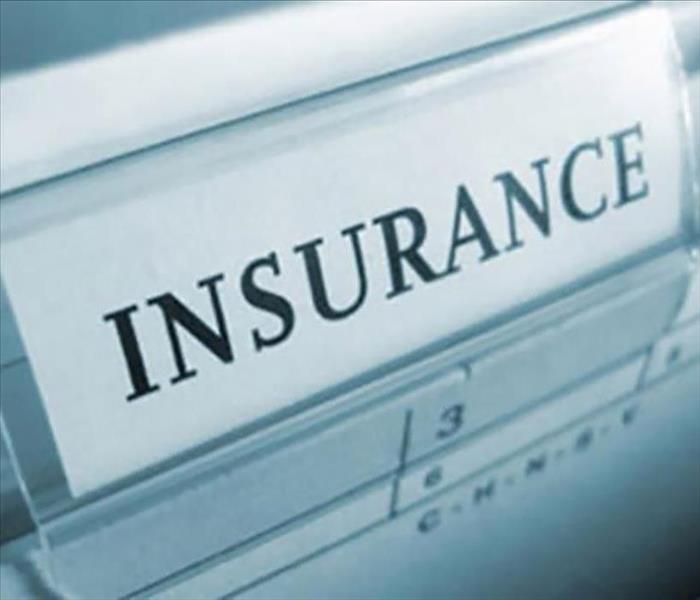 As with any insurance claim, call the claims department immediately and take photos of the damage.
As with any insurance claim, call the claims department immediately and take photos of the damage.
All policies vary so please read the specific coverages, terms, provisions, exclusions, and conditions of your policy itself. However, here are some typical coverages of homeowner’s insurance relating to winter storm damage:
Ice Dam Insurance Coverage
Very few insurance policies cover ice dam or snow removal from your roof or anywhere else on your property for that matter. However, interior or exterior damage caused by an ice dam on your roof is typically covered. As with any insurance claim, call the claims department immediately and take photos of the damage.
Frozen Pipes Insurance Coverage
Not all companies pay to have frozen pipes thawed by professionals, though some will. Most policies cover pipe replacement and water damage. The coverage may not apply if you turned the furnace off for the winter without winterizing the house and its contents.
Interruption of Services
If you lose power during a storm, an all-risk homeowner’s policy usually pays for spoiled food, repairs to damage caused by loss of power, and appliances damaged by the outage. Many policies also will pay for shelter when you lose power for extended periods during the winter. If you lose heat and fail to take steps to prevent pipes from freezing, your policy may not cover the resulting damage.
Tips to Prevent Frozen Pipes when Cold Hits
1/1/2017 (Permalink)
Cold temperatures are inevitable here in New England. When the freezing temperatures hit, here are some helpful prevention tips:
- When you know temperatures will be dipping below freezing, simply allow water to run in all the sinks at a slow, constant drip. It only needs to trickle, and that tiny amount of water will keep the water moving through the pipes and prevent them from freezing.
- Open up the cabinet doors in the bathrooms and kitchen. This will allow the heat from the home to circulate and warm up the pipes.
- Keep the garage door closed to keep garage pipes from freezing.
- Keep your house at a warm, consistent temperature both day and night.
- If you leave your home for extended periods of time, do not set your thermostat lower than 55 decrees.
- If you do end up with frozen pipes, a hand-held hair dryer or heat lamp can thaw them.
Have water damage from a frozen pipe? Call Us Today 781-341-7007
Frozen Pipes – Tips to Prepare for Winter
12/27/2016 (Permalink)
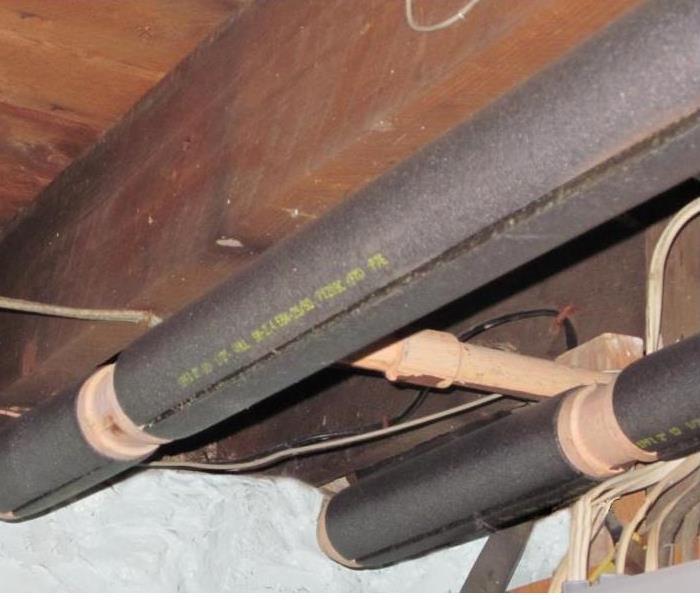 Following these easy steps can prevent expensive damage repairs.
Following these easy steps can prevent expensive damage repairs.
Plumbing breaks and flood damage can be incredibly costly, so preparation is key to keep your pipes from freezing. Follow these easy steps to prevent expensive plumbing repairs.
Water Main:
Locate your house’s water main shut-off valve. In case of a water emergency, you will need to shut off all water flow to the home, and this time-saving knowledge could save you thousands in case of a burst pipe.
Exterior Pipes:
Locate all outdoor spigots and drain. Drain and store all of your hoses. Locate all other exterior pipes and shut down supply lines. Install insulated pipe sleeves on exterior supply lines.
Attic, Basement and Crawl Space Pipes:
Install pipe sleeves on both cold and hot water pipes in attics, basements and crawl spaces.
Cold Air Entry Points:
Seal the outside of your home with caulk or insulation. Check your exterior envelope for air leaks and cracks to help prevent frozen pipes and boost heating efficiency in the winter.
Have water damage from a frozen pipe? Call Us Today 781-341-7007
FROZEN PIPE & WATER DAMAGE: TIPS FOR WINTER WEATHER EMERGENCIES
12/18/2016 (Permalink)
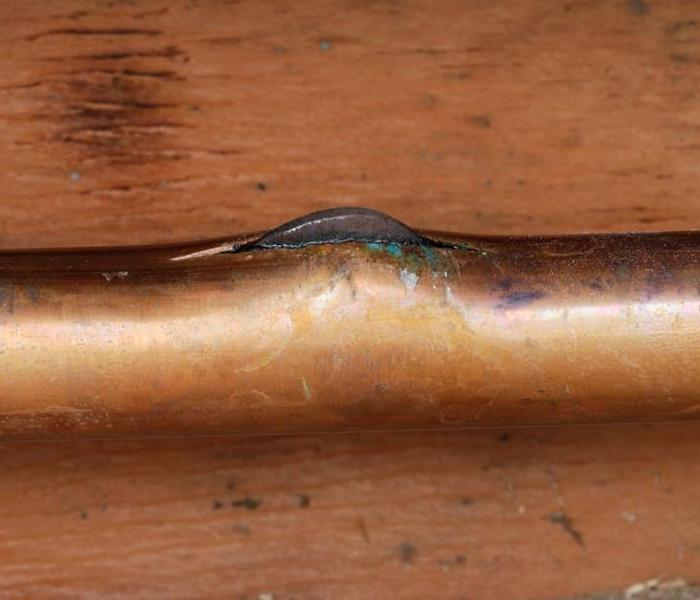 If you find a crack in your pipe, call a plumber for advice before doing anything else.
If you find a crack in your pipe, call a plumber for advice before doing anything else.
When winter temperatures are at their coldest, the last thing you want to deal with is water damage. Powerful winter storms fueled by freezing temperatures and extreme winds, means that frozen pipes as well as flooding are very real possibilities. The most frequent calls we receive in the winter are usually caused by these types of disasters.
Frozen Pipes
In areas that drop below freezing, it’s always important to stay vigilant about preventing frozen pipes during the winter—but especially if a building is new, recently remodeled or vacant.
Frozen pipes can usually be prevented by closely inspecting all areas of your building where temperatures could drop below freezing and then taking preventative measures, such as adding pipe insulation, sealing openings, or adding a heat source.
If you do locate a frozen pipe, these steps can reduce the likelihood of it bursting:
- Turn off water to the building at the main water shutoff valve
- Inspect the pipe closely for cracks and note any that you find
- If you find cracks, call a plumber for advice before doing anything else
- If there is no damage present, add a space heater to the area or use a hair dryer to gradually warm the pipe. If the outside temperature is expected to rise, you can also wait for the pipe to thaw on its own before turning the water back on. PROCEED WITH CAUTION: Never use any type of open flame or torch to thaw pipes.
If a pipe has already burst, then you’re dealing with different headaches, which leads well into our next topic.
Resources to Handle Water Damage from Frozen Pipes
When storms hit, we can scale our resources to handle a large winter storm or flooding disaster. We can access resources equipment and personnel from a network of 1,700 Franchises across the country and elite Disaster Recovery Teams that are strategically located throughout the United States. Large or small, we have the resources to remove and repair your water damage.
Have water damage from a frozen pipe? Call Us Today 781-341-7007
Commercial Steamer for Ice Dam Removal
12/12/2016 (Permalink)
 Our steamer relies on high temperatures and low-pressure to safely remove ice and snow from roofs, downspouts, sewer lines, and more.
Our steamer relies on high temperatures and low-pressure to safely remove ice and snow from roofs, downspouts, sewer lines, and more.
Protecting one’s home from ice and snow during the winter is a fact of life for residents in the Northeast. Many people are looking for a quick and efficient way to resolve their ice dam problems and with our commercial steamer, SERVPRO of Milton / Braintree is the solution to your ice dam problem.
Our commercial steamer relies on high temperatures and low-pressure to safely remove ice and snow from roofs, downspouts, sewer lines, and more. Our machine is rugged and mobile, so we have little trouble assisting our clients even in the most extreme conditions.
Don’t let other companies convince you that a regular hot water pressure washer will work as well as our high-temperature, low-pressure steamer. While high-pressure is sometimes appropriate for melting ice from sidewalks and parking lots, it can cause damage to shingles and roofs. Our steamer operates at the optimal temperature of 290 degrees, which results in less water run-off, faster ice removal, and an overall cleaner ice dam solution.
SERVPRO of Milton/Braintree offers safe, professional snow and ice dam removal services for your home or business. Our experienced team will be on site within a matter of hours, saving you time, effort, and costly repairs later. Don't wait until it's too late. Call us today and have the job done safely and done right. (781) 341-7007.
Removing and Storing the Contents of Your Home
11/7/2016 (Permalink)
When your home or business is damaged, your first thoughts may not only be how to restore your home or business to its previous state, but how to clean and restore your belongings as well. If your home or business suffers storm, water, fire, smoke or mold damage, the cleanup and restoration experts at SERVPRO of Milton/Braintree are the premier choice for a full and thorough clean up and restoration of both the contents of your home or business as well as the structure itself.
Many disaster situations require home and business content removal and relocation for prompt and thorough cleaning and restoration. If a home suffers fire and smoke damage, for example, it is often easier, more secure, and cost-efficient to take certain contents to another location for restoration work. SERVPRO of Milton/Braintree provides complete content restoration as well as pack out services. We will carefully and respectfully take the contents of your home or business to be restored, packed, and delivered to an off-site facility. The pack-out process involves meticulous documentation to ensure your items receive the best possible care, including photo documentation, identification numbers and detailed lists. Call us to help you deal with removing and cataloguing your:
- Artwork
- Documents
- Books
- Photographs
- VHS and DVD media
- Clothing
- Electronics (televisions, computers, stereos, etc.)
- Furniture
- Rugs
- Retail Inventory
Storage
We use state of the art XactContents software to inventory and track your belongings at all stages of the pack out process. While at the SERVPRO of Milton/Braintree restoration facility, your items will be housed in a secure, climate-controlled environment. Your possessions will remain there until the cleaning and restoration process is complete.
Have storm, fire, mold or flood damage? Call SERVPRO of Milton / Braintree today at 781-341-7007!
For Immediate Service in Milton, Braintree, Randolph, Holbrook & Avon Call SERVPRO of Milton / Braintree
4/20/2016 (Permalink)
SERVPRO of Milton / Braintree provides 24-hour emergency service and is dedicated to being faster to any-sized disaster. We can respond immediately to your emergency and have the expertise to handle your restoration or cleaning needs.
- 24-Hour Emergency Service
- Faster to Any-Sized Disaster
- Highly Trained Restoration Technicians
- A Trusted Leader in the Restoration Industry
- Locally Owned and Operated
- Advanced Restoration and Cleaning Equipment
Have Questions? Call Us 24/7 – 781-341-7007
Residential Services
Whether your home needs emergency flood damage or your upholstery cleaned, you can depend on us. Our technicians have extensive cleaning and restoration training and can make your property look its best. Learn more about our residential services:
- Water Damage Restoration
- Fire Damage Restoration
- Mold Remediation
- Storm Damage Restoration
- Cleaning Services
- Building/Reconstruction Services
Commercial Services
There's never a convenient time for fire or Water damage to strike your commercial property. Every hour spent cleaning up is an hour of lost revenue and productivity. So when the need arises for professional cleaning or emergency restoration services we have the training and expertise to respond promptly with highly trained technicians to get your property back to business.
- Commercial Water Damage Restoration
- Commercial Fire Damage Restoration
When Storms or Floods hit, SERVPRO of Milton / Braintree is ready!
4/20/2016 (Permalink)
SERVPRO of Milton / Braintree specializes in storm and flood damage restoration. Our crews are highly trained and we use specialized equipment to restore your property to its original pre-storm condition.
Faster Response
Since we are locally owned and operated, we are able to respond quicker with the right resources, which is extremely important. A fast response lessens the damage, limits further damage, and reduces the restoration cost and time required to restore your property.
Resources to Handle Floods and Storms
When storms hit, we can scale our resources to handle a large storm, hurricane or flooding disaster. We can access resources equipment and personnel from a network of 1,700 Franchises across the country and elite Disaster Recovery Teams that are strategically located throughout the United States.
Have Storm or Flood Damage? Call Us Today 781-341-7007
Ice Dam and Snow Removal Service
2/4/2015 (Permalink)
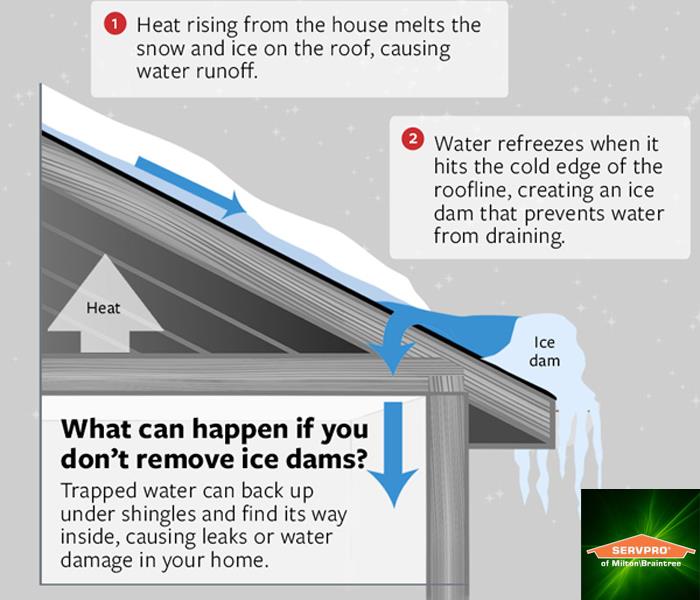 Ice Dam Removal Service
Ice Dam Removal Service
What is an ice dam?
An ice dam is the ridge of ice that forms at the edge of a roof which prevents melting snow from draining as it should. The water that backs up behind the ice dam can leak into the home and cause damage to walls, floors, ceilings, insulation, and other areas. Most ice dams occur on the lowest edge of your roof.
There are 6 warning signs for ice dams:
1. Your home has had ice dams in the past.
2. You see roof ice– icicles forming on the edge of the roof, or off the front edge of the gutter.
3. Ice is coming through the soffit.
4. Ice is forming behind the gutters (if gutters are present).
5. You see ice or water on the exterior wall.
6. You see water coming through the frame of a door or window.
Professional Ice Dam Removal
SERVPRO of Milton/Braintree offers safe, professional snow and ice dam removal services for your home or business. Our experienced team will be onsite within a matter of hours, saving you time, effort and costly repairs later. Don't wait until it's too late. Call us today and have the job done safely and done right. (781) 341-7007.






 24/7 Emergency Service
24/7 Emergency Service
